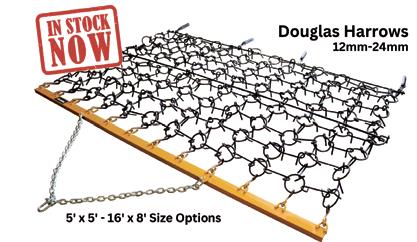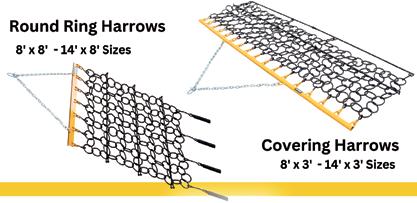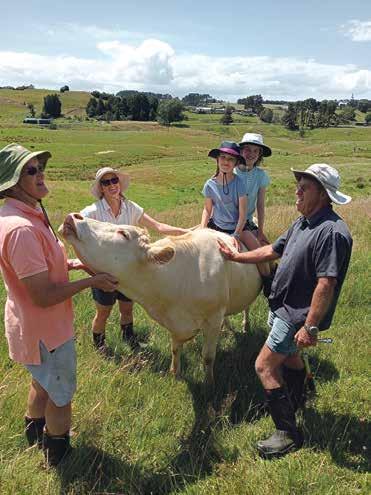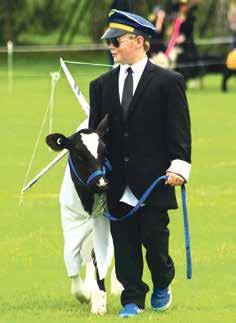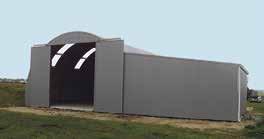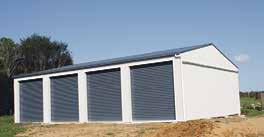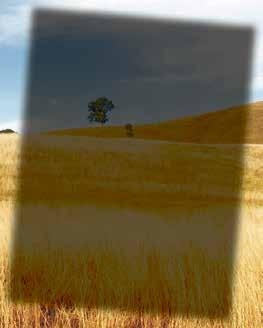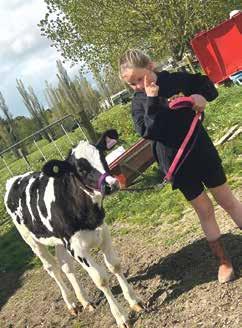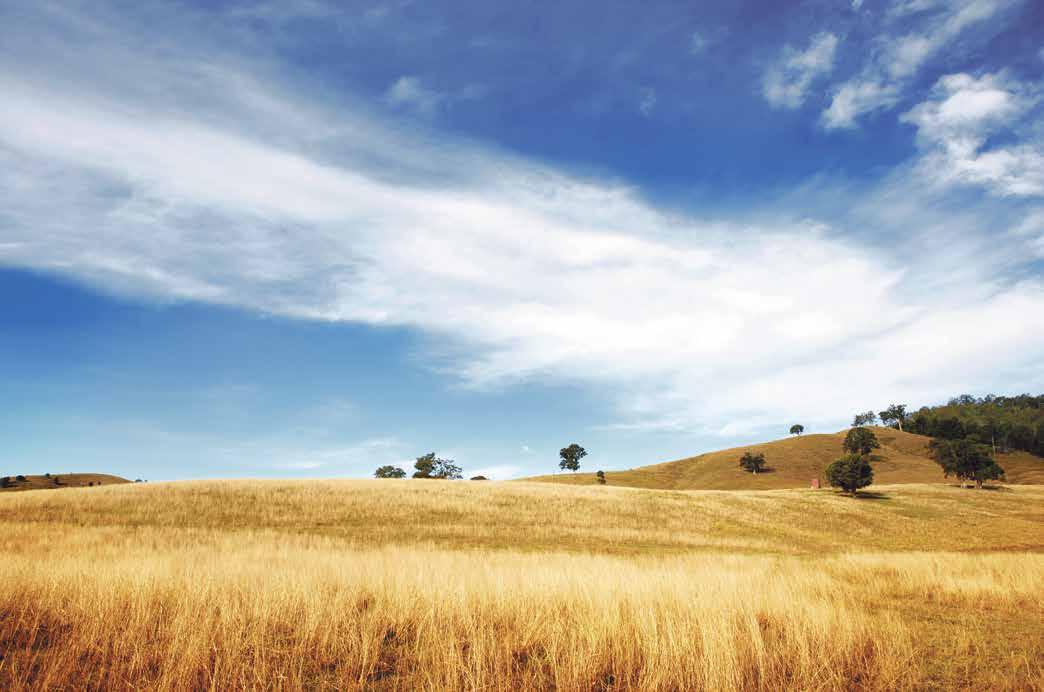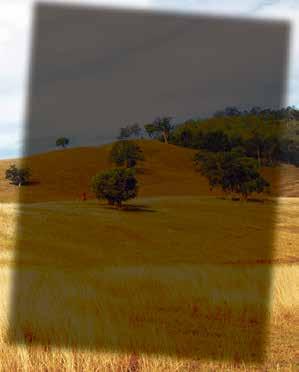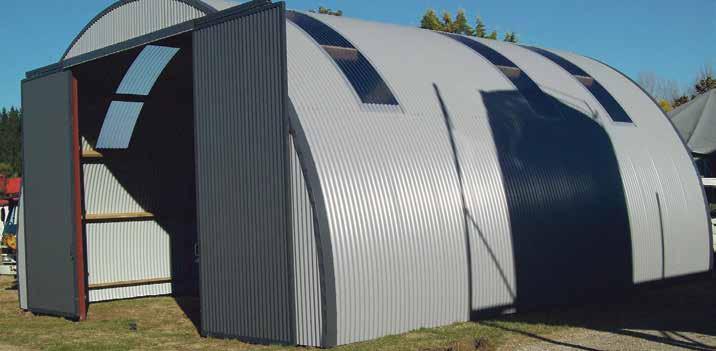






























































its legs and heaved it on the atbed. When we got home, he hauled out a gleaming blade, parked the sheep on its haunches, pulled the head back to expose the external jugular and…...CRASH!! e lights went out. I fainted. I didn’t see the sheep being dispatched. But I did get to eat her.




It was the happiest of times, and it was the saddest of times – with apologies to Dickens. ‘Gravy’, ‘Tatters’ and ‘Roast’ had arrived on a small lifestyle block just north of Katikati – three cute woolly lambs, gamboling in the sun. Cute as all hell. e lambs came rst, chickens would follow as a young enterprising couple I know got about setting up their own mini farmyard and vegie patch. ey’re keen to take supermarkets out of the weekly reckoning.
Love the idealism, the romanticism. But the reality is, come August, the biggest of those lambs will get the chop. Either ‘Gravy’, ‘Tatters’ or ‘Roast’ will be committed to the freezer. And I misguidedly thought the names were a joke. Perhaps I should tell the lambs: “Don’t eat too much and too fast, because it won’t serve you well in August…” Suddenly this little corner of rural paradise has become a death row with all appeals already exhausted.
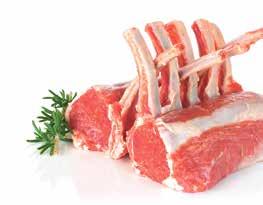
When we were kids, my older brother would visit the local abattoir during the school holidays. He knew how to have a good time. He would come home with ear tags, horns and assorted animal bits. Vaguely interesting I thought, so one day I went with him.
Why do I feel queasy? I had the same uncomfortable sensation on a farm in Ashburton. But worse. e farmer pulled a straggly old ewe from the ock as we headed home one day, trussed
I watched as a slaughterman slit open the belly of a freshly slaughtered beast and the steaming entrails spewed out all over his regulation white gumboots. It was exactly the same moment I projectile vomited my breakfast porridge all over my plastic sandals. Great holiday entertainment. I struggled eating meat for a while. I am okay with it now as long as it comes in a broken-down form – in a recyclable plastic tray covered in Glad Wrap and with a use-by date. I know the truth, I just don’t need to be constantly confronted by it.



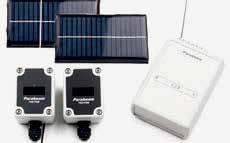

07 824 5566
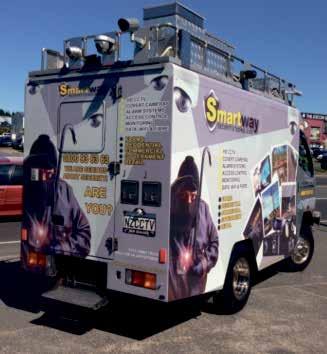
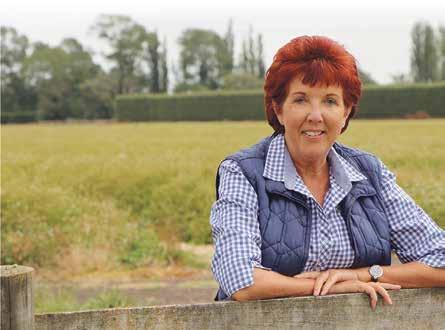
To survive and thrive in this changing world, New Zealand farmers must take a new look at what resilience means to them and their farming operations, says Foundation for Arable Research chief executive Alison Stewart.
Farming faces a number of challenges including economic uncertainty, extreme weather events, increasing regulation, environmental concerns and changing market demands.
As agriculture produces food and generates valuable export returns it is valuable to New Zealand – but it’s not special –she told FAR’s maize conference in Hamilton last month.
“New Zealand farmers need to get over the idea that ‘we’re special and we need to be treated in a special way’.”
New Zealand agriculture is important, but so are other sectors like tourism, manufacturing, health and education. “ ere’s nobody in New Zealand saying: ‘Let’s make
life di cult for agriculture’.”
Change in agriculture is happening across the world.
Alison says agricultural resilience isn’t just about the ability of farms to cope, it is about their ability to transform.
Creating resilience is the key to being a successful farmer.
“You may think that change is overwhelming but this maize conference has heard from farmers who have already embraced it.”
Strategies to build farm resilience include adopting climate smart practices, diversi cation, nancial management, embracing learning and innovation and networks and collaboration.
Climate smart practices include using drought and heat tolerant cultivars and not just focusing on yield potential, as well as implementing soil conservation measures such as no till and cover crops.
Diversi cation is also a way to manage risk, a consideration for maize growers focused on a single crop in continuous rotation.
“Maize creates a simple farm business, delivers economies of scale and usually generates greater pro ts. But, in a




changing climate it can lead to greater risk and vulnerability to crop failure, uctuating commodity prices and increasing input costs.” Growers also need to proactively plan and understand their nances. Alison says embracing learning and innovation and adopting new knowledge, tools and technology is also key.
“If you are working in isolation and doing the same thing you have always done then your future will be challenging.”
Kiwis regard themselves as innovative, with a No. 8 wire mentality, but New Zealand is not embracing change as much as the rest of the world and this is a risk, says Alison.
“If we are truly world leaders in agriculture, we need to change. World leaders never defend the status quo because they are always innovating, changing and evolving; that is what makes you world leaders. e All Blacks found that out the hard way.
“ e only way to innovate is to have networks and collaboration, sharing knowledge, resources and expertise.”
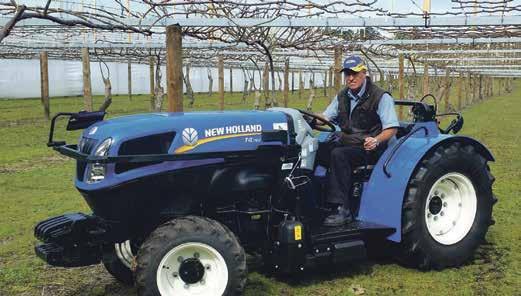


Nobody knows what the future looks like as the speed of change is so fast, says Alison. “I only know it will change and your ability to respond to change will be what determines your success.”
e February 12-13 conference had earlier heard from Margaret Stuart of Nestle Australasia. One of the world’s biggest food companies, Nestle is committed to net zero greenhouse gas emissions by 2050. Sourcing ingredients represents 71.4 per cent of its emissions, mainly coming from dairy and livestock.

The ES00, 4.6m Endless Pools Fitness System, provides the ideal environment for at-home, total-body fitness. Featuring the signature Endless Pools Swim Current, the ES00 gives you the best swim current on the market. Fully adjustable for every level - from Olympians to octogenarians - the smooth current lets you swim easily in place. The broad, deep current also adds resistance to a range of aquatic exercises for added core engagement.
Our Underwater Treadmill (available on the 1.5m model) lets you walk, jog or run in water's low-impact environment. You'll burn just as many calories, but without the pounding of dry-land activity. It's ideal for anyone who has (or wants to avoid!) joint pain or overuse injuries. Relax in the spa end after your workout It's a fantastic fitness machine!
View in-store now: 34 Chapel Street TAURANGA Tel 07 578 5866. SpaShop.co.nz

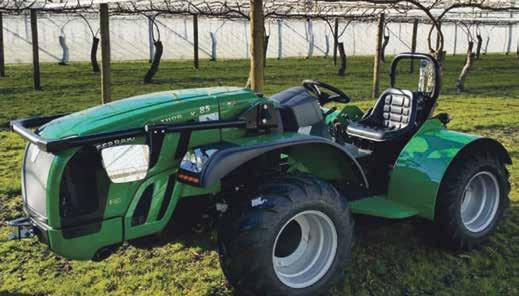

Since NIWA forecasted an El Niño weather pattern late last year there’s been a lot of talk about it – but what does it mean for our region?
Typically, El Niño is an extreme climate pattern that brings stronger or more frequent winds, leading to an elevated risk of drier-than-normal conditions. In the Bay of Plenty, while El Niño conditions may not have come exactly as initially forecasted, we are now experiencing more warmer and dry days.
is ongoing combination of wind and warmth, which is predicted to continue well into autumn, can have detrimental impacts on the health of our local waterways, wildlife, and people’s livelihoods. For Bay of Plenty Regional Council, it’s our


responsibility to monitor and manage the sustainable use of our region’s waterways. We do this by having a network of monitoring sites sending back real-time data on stream ows, aquifer levels, soil moisture levels and rainfall – all good indicators of our waterway’s health.
During periods of dry weather, we use this information to make informed decisions about managing water use and whether we should move through levels of our Water Shortage Event framework. We also work closely with the Primary Sector Coordination Group – which includes Rural Support Trust, the Ministry for Primary Industries, Federated Farmers, DairyNZ, Beef+Lamb NZ and other local agencies and organisations. We share our data with them so they can help support their communities.
While drought-like conditions may be hard to think about after last year’s extreme rain events, it’s important we don’t get complacent. Right now, we are in level 0 of our Water Shortage Event framework, which means there are no water shortage concerns. But, if warm and dry days continue as predicted, we may need to be prepared for reduced water availability.
Check for leaks in your system. In a dry weather event, water availability can become scarce. is will ensure you aren’t unintentionally wasting water.
Good
•
•
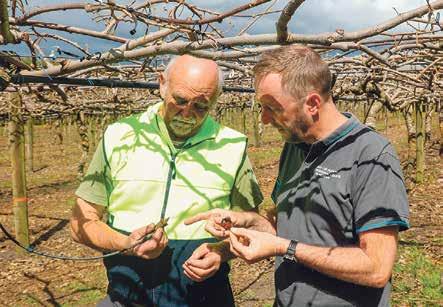
Know the water rules. You may need a resource consent if:
• You are taking more than 35,000L per day (35m3/day) from a groundwater source (bore, well); or
• You are taking more than 15,000L per day (15m3/day) from a surface water source (river, stream, spring, pond, drain), or are taking at a rate of more than 2.5 litres per second. Farmers or rural landowners can get support from Rural Support Trust online at: www.rural-support.org.nz or by calling 0800 787 254.
e Ministry for Primary Industries o er advice and assistance to people and businesses impacted by drought. We all need to forward-plan and reduce water use where we can, to support the health of our local waterways, wildlife, and people’s livelihoods. For more information about regional council’s work to protect waterways during dry weather, visit: boprc.govt.nz/ watershortage
People Expo events are back, providing dairy farmers an opportunity to better understand workforce dynamics, and ideas on actions they can take to nd and keep great people.
DairyNZ and Dairy Women’s Network are partnering to deliver four People Expo events this month in Northland, Bay of Plenty, ManawatuWhanganūi and Southland.
e Bay of Plenty People Expo is March 27 from 9.30am-2.30pm at Millennium Hotel, Rotorua. It’s free to attend. Register at: https://www. dairynz.co.nz/events/people-expo/
DairyNZ lead advisor for people, Jane Muir, who is MC, encourages farmers to join the expos to hear
about what’s needed to tackle the big employment issues on-farm.
“Supporting great workplaces and people on farm is critical.
“We want to support farmers with credible evidence and practical solutions that help them nd and keep the sta they want.”
Guest speaker, leading economist Shamubeel Eaqub, will discuss global, national and regional economic and workforce changes and outline why farm businesses must act di erently and look in new places to stay successful. “I’m looking forward to sharing practical ways for us to think di erently as leaders, and to act di erently as a sector, along with having insightful discussions with farmers.”For more information, visit: dairynz.co.nz/peopleexpo

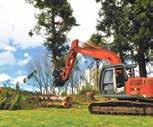


•
•
•

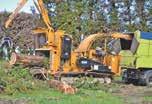
•
•
Neil Fitzgerald was born into a dairying family in Ramarama.
ey moved to Springdale and his father started a contract drainage business, although he worked on the farm.
“I learned to drive at 15 and worked for D H Price in Te Aroha.
Using draglines I dug canals, formed stopbanks and cleared drains all over the Waikato,” says Neil. He worked on the foundations for the raised Tahuna to Paeroa road, which skirts the Kopuatai Peat Dome wetland, a 10,021 hectare peat bog.
Neil says he bought his rst dragline when “dollars and cents hit the country”, so 1967.
Neil and his wife Jennifer have had a dairy farm and contracting business for the last 56 years. eir son Grant took over the contracting, and Jennifer still oversees the dairy side. Neil is semi-retired with time to work on his large collection of tractors, bulldozers, draglines, Land Rovers, a Model A car and Minis, and add to his substantial agricultural and earthmoving model collection.
Neil was delighted when he was given a 1940s Ruston 10-RB dragline in 2018, just like ones he used to operate. e 48hp VRH Ruston diesel engine has three cylinders, and the cab sits on tracks.
“Before hydraulics came in during the late-1970s, operating a dragline required skill and experience.
“To lift the bucket safely, you had to work the clutches with your hands at the same time as using your feet for the brakes. is controlled the wire ropes running down the 28 foot boom to the bucket.
“It’s easy to tangle the ropes if you don’t know what you are doing as the cab can rotate 360 degrees.”
When breaking in boggy farmland in the Hauraki Plains, the dragline body and cab sat on wooden pads that were often semi- oating under the water surface.
“You worked going backwards, the bucket was thrown out in front, dragged until full, and hoisted up, and the cab and boom turned 90 degrees to deposit the bucket contents to the side.
“ en you reversed onto the wooden pad behind you, hooked up the wooden pad you just left and turned the cab 180 degrees to deposit that pad behind you before throwing out the bucket to the front once more.”
Neil chuckles as he remembers the slow and hair-raising process and how the goal was not to unbalance the cab and tip the whole rig over into the bog. “It’s a shame because at one point draglines were being scrapped as hydraulically operated machines took over.”
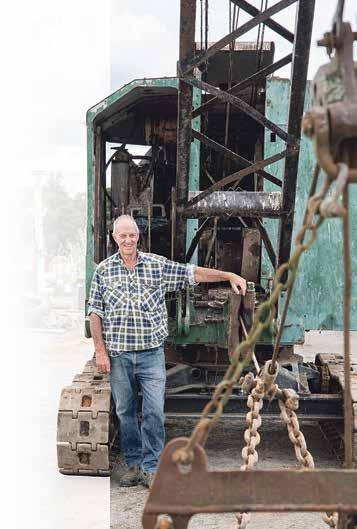
However Neil has three draglines, which he admits are purely for nostalgia reasons and so there are still some of these amazing machines around.
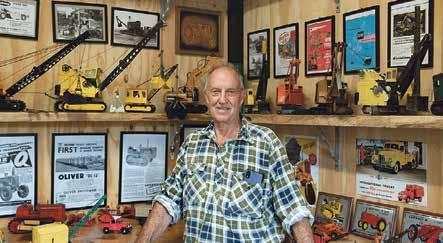
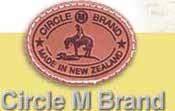


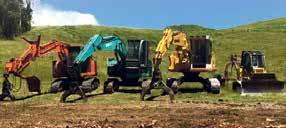

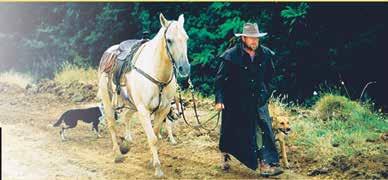
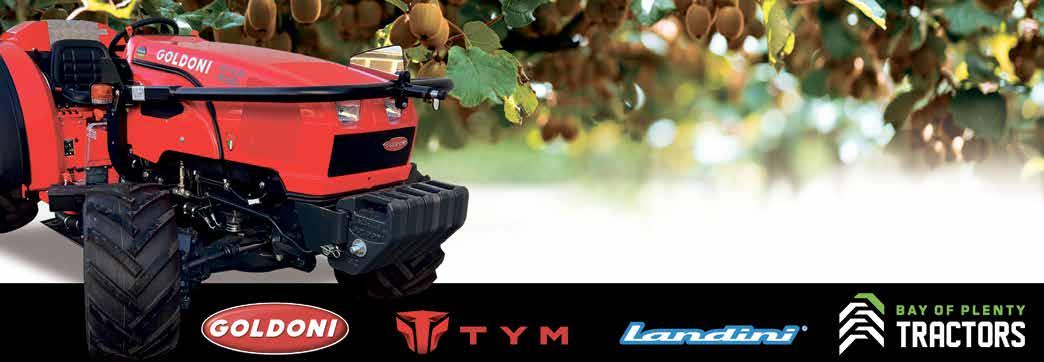

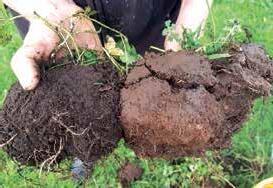
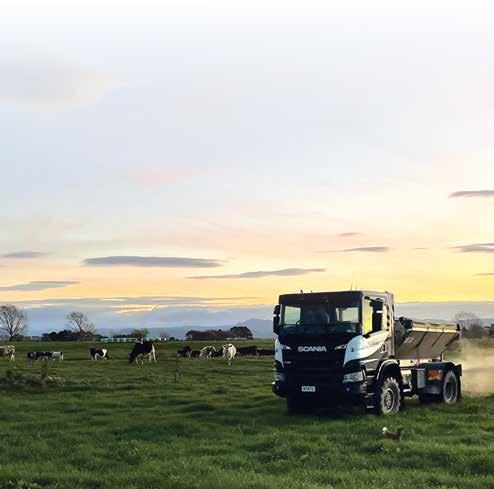



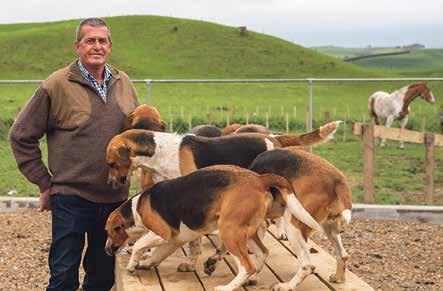
Following a carefully thoughtout plan, a long search and a lot of time and e ort from the hunt committee and wider circle of hunt members, the Waikato Hunt moved its kennels to a new property near Tirau.
Current Master of the Hunt, Andrea Miller, has played a role in the move, especially during the last two years.
“Our kennels had been at their Fencourt Rd location in Cambridge since 1968 when it was a very rural location.
“Over the past 54 years the town has slowly crept nearer and nearer, until we were right on the boundary of the rural/residential area.”
Knowing that long term the hunt would have to move, forwardthinking committee members lobbied the council to have their land changed to rural/residential zoning. is was successful and in the early-2000s, the hunt subdivided their land into seven titles. During the next two decades they looked at around 30 properties, but they didn’t cash in on the potential of their seven titles until an opportunity arose.
Andrea says that an unexpected bequest to the hunt of a property in Ohakune by a past member Richard Bates triggered a chain of events, making the complex move possible.
“ e existing tenant in Ohakune
wanted to buy the house, so that funded us being able to subdivide eight acres we had opposite the main hunt property, which when sold gave us a healthy deposit for another property.”
Initially the hunt bought 35 hectares in Roto-o-rangi, but there were di culties with the planning. However, there was a silver lining when the 2021 crazy housing market prices bene tted the subsequent re-sale.
“We decided that a small dairy farm would be a better option and bought the 70ha Tirau property in 2022. e developer who purchased Fencourt Rd was willing to give us a long settlement period.”
e race was then on to build new kennels and move the hounds to Tirau in 2023.
Sixty hectares of the farm is leased to a neighbour for dairy grazers and maize, and the main house is rented out. is generates a good, steady income for ongoing expenses.
e focus turned to the remaining 10ha, building kennels for the 30-strong pack of hounds, and renovating the second house for the current huntsman Lauryn Robertson.
“We decommissioned the cowshed and gutted it to build the kennels complex, using most of the existing structures and concrete areas. e calf shed was stripped and tted

Since 1996, we have specialised in growing bulk quantities for revegetation and restoration projects, landscaping and farm plantings. Whether you are after a few plants for your garden, or extensive planting for a subdivision, we offer quality plants at competitive prices. Quality
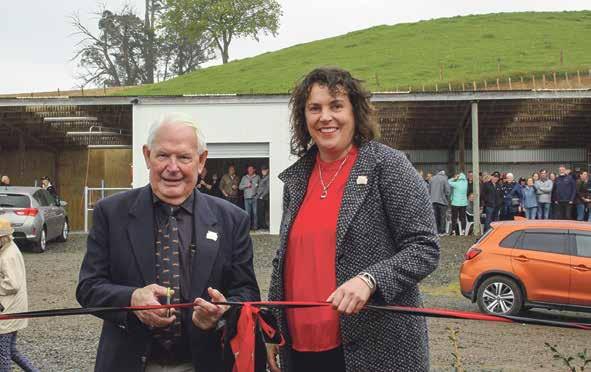
with covered horse yards, tack and feed rooms.” There are plans to extend the calf shed to make a memorabilia room to house the many years of history of the Waikato Hunt.
The kennel complex included ideas from other hunt kennels, making the most use of the existing structure and input from the hunt community to build something that was futureproofed and would stand for another 50-odd years.
The design has eight runs; six large ones to house six hounds in each, and two smaller ones to house bitches on heat or puppies.
The remodelled cowshed has a good overhanging roof that offers a shaded area in the runs and accommodates insulated sleeping quarters for the hounds.
“We’ve brought in two shipping containers and use one as a freezer for the meat and one for dry food. I feed the hounds in a designated feed room and hose down the concrete floor,” says Lauryn.
Lauryn has been huntsman with the Waikato Hunt and based at the Fencourt kennels for 25 years, so the move was a big one for him, as well as the hounds.
“The shift happened right in the middle of the 2023 hunting season, and we did it in one day.”
Lauryn transported his own four horses and the hounds to the new property and concentrated on settling them in. His sheep and beefies were trucked over by hunt members.
Lauryn says he wasn’t involved with the house move at all and other hunt members packed up his old home, brought everything over, and by the end of the day had everything pretty much set up and livable in the new house for which he is very grateful.
“It takes a lot to shift a pack of hounds as they

are initially unsure and don’t know the routine or what is expected of them, but they were pretty good and adapted well.”
At the start the raised wooden day beds for the runs weren’t ready but as soon as they arrived the hounds jumped on them.
“They love being higher up and sunbathing, watching the world go by.”
Ex-Master from 1980-1983 and Patron of the Waikato Hunt, Jim Keyte cut the ribbon at a grand opening of the Tirau kennels on October 7, 2023. Around 100 past and current members and neighbours attended.

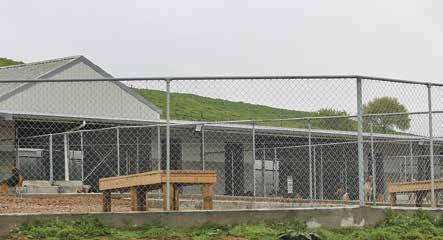

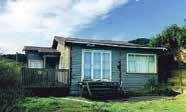





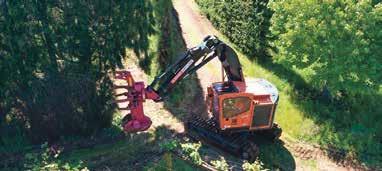
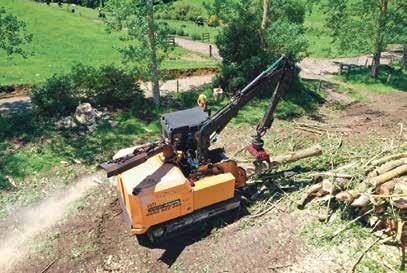
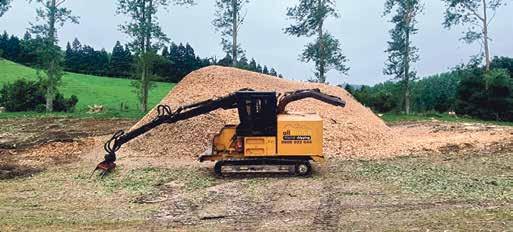
Don’t worry, your tractor doesn’t love you as much as you might think.
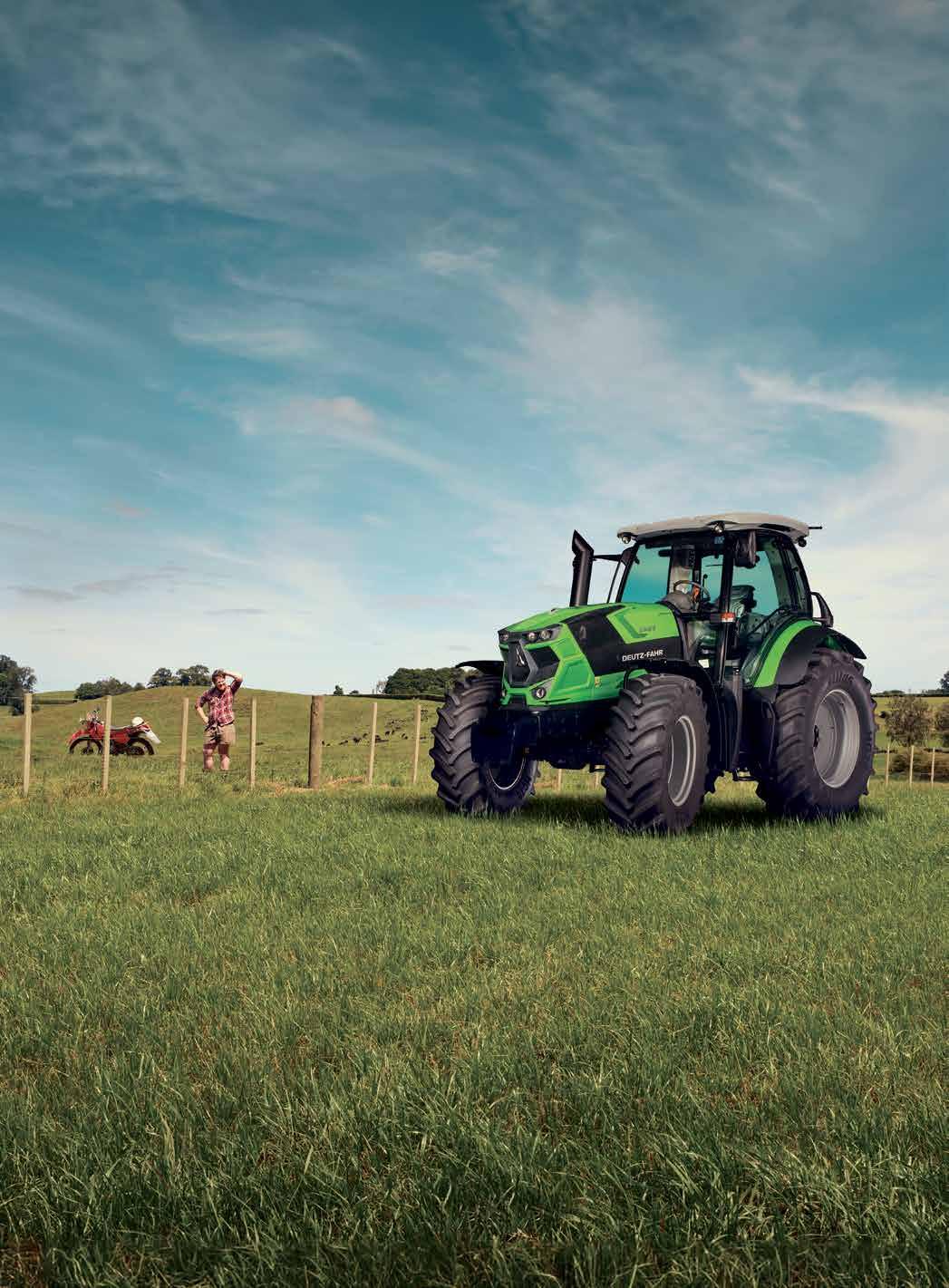
The grass is greener.
Wide Span Sheds Rotorua is part of a nationwide group which has been building sheds across New Zealand for more than 20 years.
Owner of the Rotorua, Tauranga and Hamilton franchises, Kurt Rossiter, says the exibility of design and size of Wide Span Sheds sees them across residential, agricultural and horticultural sectors.
“Our site-speci c sheds, designed for New Zealand conditions, are manufactured from 450 MPa or greater high tensile steel, backed by a 50-year durability statement and accredited by ShedSafe providing quality assurance.
“We have a wide range of ‘standard’
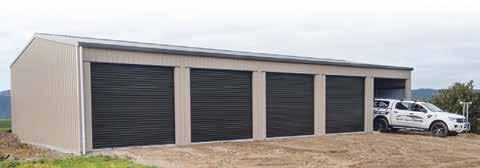
building designs ranging from residential garages to rural farm buildings, equine structures, and industrial premises.
“Our local team specialises in designing and delivering custom sheds, which are engineered to meet the speci c conditions of each site as well as each client’s unique requirements.
“Depending on the region, we can design sheds with open spans up to 30
metres and heights up to 9.5 metres at almost in nite lengths.”
Kurt says there is a wide choice of Coloursteel colours, making it easy to match existing buildings or create a design statement.
“ e level of service we o er our clients is tailored to suit their speci c requirements.
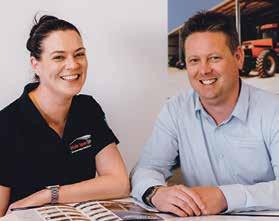
From the supply of the building kit only, through to complete build packages”
“We also o er assistance with council approvals and submissions to ensure each project runs as smoothly as possible”.
Kurt says Wide Span Sheds expertise is available across Hamilton, Waikato, Tauranga, Waihi, Te Puke, Rotorua, Whakatane, Tokoroa, Taupo, Tirau and all surrounding areas and in between.
You know you are doing something right when more than 95 per cent of your business comes from referrals.
at is the reality for Ag & Industrial Matamata Ltd owner Matt Cover, who with wife Kyla developed the company around 17 years ago “after dairy farming”.
“I enjoyed milking but not as much as I did repairing and upgrading whatever needed doing on the farm – from welding gates to fencing – the whole gamut.
“And what I did used to result in requests to do more of that type of work – to the point where it was either dairy farming, or engineering. I chose the latter and set up Ag and Industrial,” says Matt.
alongside a diesel mechanic and steel xer.
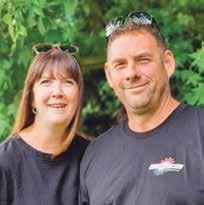
Today, 17 years on, two of Matt’s sons work in the business – one a builder and the other a fencer –
“Our mantra is if you need something done on farm or industrial, and don’t know where to turn, come to us. No job is too big or too small.
“We turn our hand to almost anything and the fact that more than 95 per cent of our business comes from referrals speaks volumes for the variety and quality of the work we do.”
Broadly speaking, Ag & Industrial construct farm buildings – from cow sheds through to hay barns, covered feed pads and industrial buildings. e company manufactures concrete panels tailored to speci c needs, feed bunkers, feed pads and silage pits with steelwork including gates, pipework, and stainless feed trough installation. In addition, Ag & Industrial repair and service farm machinery and industrial plant.

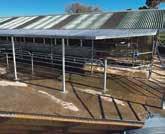
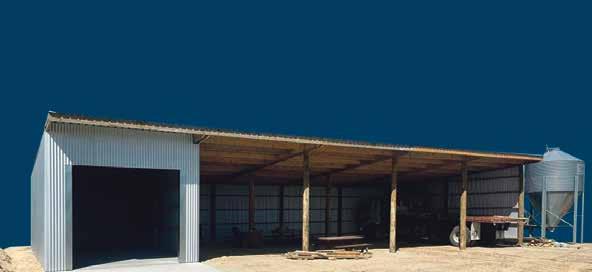




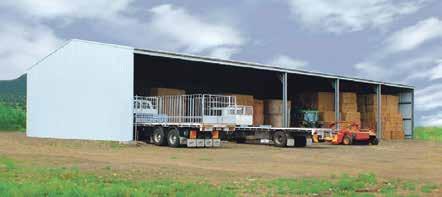
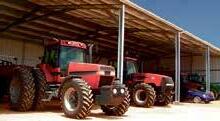
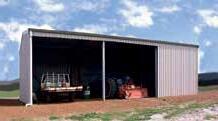
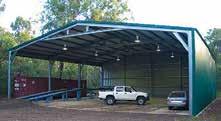
Advantage Designer Homes has embarked on an exciting partnership with Modular Spaces, introducing an innovative range of one-two bedroom transportable homes that epitomise compact elegance.
ADH spokesperson Candice Barnes says this collaboration ushers in a fresh perspective on a ordable, stylish and sustainable living, perfectly suited to


New Zealand’s evolving housing needs.
“ e union of ADH’s building prowess with Modular Spaces’ design nesse delivers homes that exemplify modern functionality and aesthetics.
“Despite their smaller footprint, these homes are ingeniously designed to maximise living space, blending comfort with contemporary style.”
Targeting a wide audience, from rsthome buyers to those scaling down, these transportable homes also serve as excellent secondary dwellings or









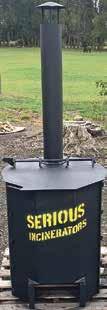


holiday abodes. “Each model is tailored to meet the demands of modern living while o ering the added bene t of mobility.”
Candice says sustainability is a cornerstone of the ADH and Modular Spaces venture. “Ecofriendly building practices are prioritised, utilising materials and construction techniques that lessen environmental impact. Energy-e cient features are standard, re ecting a commitment to reducing energy use.”
And home ownership is streamlined through this partnership. “ADH’s expertise in transportable home delivery and Modular Spaces’ innovative designs ensure a stress-free path to acquiring a transportable home.”

Join the movement towards a future where housing is not only about space but also about smart living solutions. “ADH and Modular Spaces are at the forefront, creating transportable homes that o er a lifestyle of sophistication, practicality, and ecological responsibility. Welcome to a new era of housing with ADH and Modular Spaces – where small-scale living meets grand design expectations!”

Fire ban? No problem. You can burn year-round with a Serious Incinerator.
Made by Northland company Iron Tree Products, the appropriately named ‘Serious Incinerator’ is built to conform to New Zealand Fire and Emergency regulations.

Iron Tree Products’ Milton Brown says the Serious Incinerator was originally manufactured by Newman Engineering “with some in constant use for close on 20 years”.
“ e addition of an optional Spark Arrestor and Ash Guard enables the Serious Incinerator to be used as an approved incinerator even during a Restricted Fire Season without a re permit – although there could be regional variations depending on the proximity to such things as forestry,” says Milton.
large 900mm diameter. Each features a lid, which safely latches back to the chimney and a heavy-duty grate. Ash is easily removed through the large access opening at the base of the incinerator.
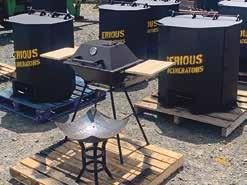

e Serious Incinerator comes in three sizes.
e Serious Incinerator comes in three sizes – small 600mm diameter, medium 750mm diameter and


Milton says Serious Incinerators are extremely popular with everyone from farmers and horticulturists to lifestyle block and rural homeowners across New Zealand. “It’s not unusual to receive orders from as far a eld as Southland.”
Iron Tree Products is a family-owned business operating from a workshop in Titoki, Whangārei. eir focus is on producing products, which are well engineered and manufactured “so they last for decades”.
e product range includes animal shelters and pens and at decks for Toyota Landcruisers with the recent addition of handcrafted braziers and charcoal barbecues.


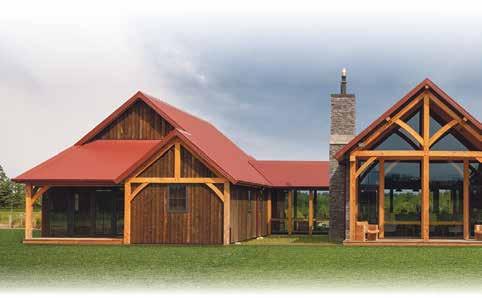
New Zealand-grown timber, milled and produced in Hawke’s Bay is literally the heart of Heritage Timbercraft barn homes.
Heritage Timbercraft is located on the 280 acre Mohaka River Farm, which is also home to the source of much of the timber used in their barn homes – Mohaka River Timber.
Heritage Timbercraft operations manager Peter Macfarlane says the Macrocarpa, Lawson Cypress, Lusitanica and Douglas Fir timber used in their unique homes is sourced from Mohaka River Timber and small-scale sawmills from around New Zealand.
Individually tailored
“Our homes are the embodiment of ‘clean, green and environmentally sustainable’ constructed from timber milled on two Peterson Winch Production Frame sawmills. Each home is tailored to the client, the site and environment – and the ability, therefore, to tailor the timber for the home is critical.
“ is oversight – from concept through to completion – is the unique di erence that sees Heritage Timbercraft barn homes in demand across New Zealand,” says Peter.
e WPF is just one of a range of sawmills designed and developed by Rotorua-based Peterson Portable Sawmills, each catering to the speci c needs of sawmillers worldwide.
e WPF is particularly suited to Heritage Timbercraft homes where every residence is unique. Operated by one person, the mills can be tailored for almost any application with design features that enable the operator to work more e ciently while allowing for future upgrades when demand increases.
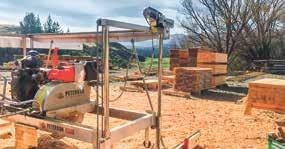
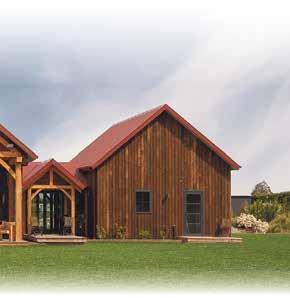

“We are easily able to mill 250 x 250 beams in a single pass and bigger beams with double cutting, which is the joining of two horizontal cuts.”
e Peterson WPFs that Heritage Timbercraft operate, are constructed of high quality, handpolished stainless steel and aluminium, providing a virtually rust-free sawmill. Using stronger, lighter materials also means the mills are robust in performance and, most importantly, have long term durability in even the harshest conditions. Peter says the innovation, design excellence and precision mean that beams cut with the Peterson WPF sawmills are perfect for the range of Heritage Timbercraft barn homes.

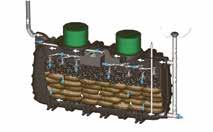



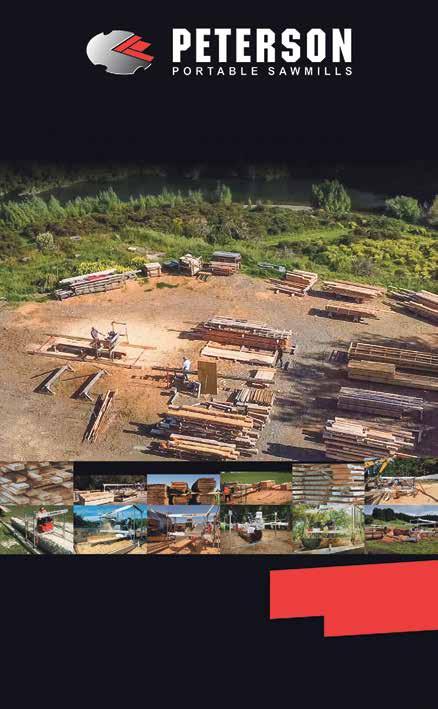

ere is a de nite sense of pride and belonging among New Zealand’s old farming families whose descendants are still working the land today.
e Fitzgerald family are no exception and have farmed and run earthworks businesses in the Auckland and Waikato areas for four generations. ird generation Fitzgeralds, Neil and Jennifer head the family, with son Grant and his wife Jodi farming alongside them, and three grandsons showing a keen interest in farming and machinery.
Neil and Jennifer’s three daughters, Charmaine, Karyn and Debra have all pursued successful careers outside farming.
“It started in 1913 when my grandfather, William Fitzgerald,
emigrated from England and dairy farmed at Ramarama,” says Neil. And 111 years later, Neil still has the ledger where the money for the land and the purchases required to set up the farm were recorded. is treasured heirloom shows a fascinating insight into pre-World War I farming life in New Zealand. ey moved to Papakura and Neil’s father, Alan Fitzgerald, took over the farm in the late-1930s. Neil was born there in 1950.
“My father ran a 50 to 100-cow dairy shed at Drury in 1951. He was a bit of a wheeler and dealer and bought and sold earthwork machinery,” says Neil. e family moved to Springdale in 1953 and Alan established an earthworks business but employed drivers to carry out the work. Only child Neil loved heavy machinery
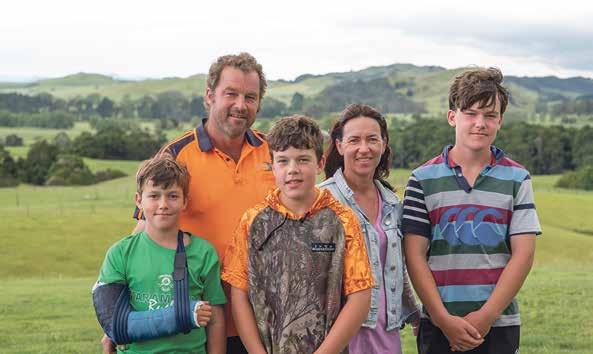
and often drove for his father but became involved in the farm to keep it in the family.
e third generation
Neil married Jennifer in 1971.
“I was brought up on a Wardville dairy farm, but I had a job in town and used to help mum with the chores associated with a big, busy household of seven kids, mum and dad, our farm worker and a lodger,” says Jennifer. She was petri ed of cows and had to overcome that when the couple went 50/50 share milking for Neil’s parents. eir herd was sold in 1978 and Neil returned to contracting. e couple lived in the Aka Aka area where Neil rebuilt stopbanks
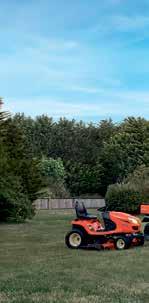


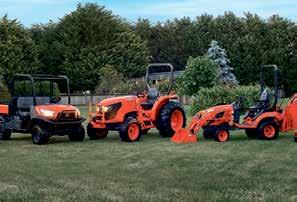
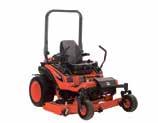

with his dragline, before moving to live in Puni on a 20-acre block while their children were young, and Jennifer worked as a secretary at the local school.

heirloom
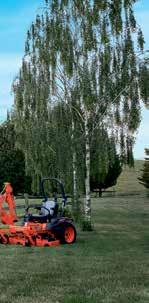



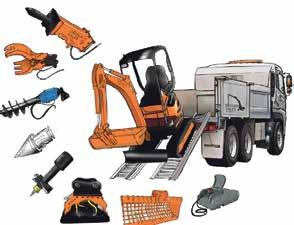
For 12 and a half years ( ve fulltime), Neil carried out earthworks for the development of Great Mercury Island, 20 miles o the Whitianga coast, coming home every three weeks.
“During this time we bought a run-down farm in Waerenga and completely redeveloped it,” says Neil. Its sale ve years later alongside the Puni property enabled the 1995 purchase of their current 137 hectare dairy farm in Mangatangi.
Jennifer oversaw the 100-year-old homestead renovations before moving the family in 2000. She managed the sta on the dairy farm, reared calves, and milked occasionally.
In 2004, Grant started working alongside Neil, taking over the contracting business in 2017. ‘Retired’ Neil looks after their own farm, which has a manager and sta with Jennifer overseeing them.
To assist Grant and Jodi expand, Neil and Jennifer bought into a neighbouring 102 hectare deer farm with them and converted it into a dairy run-o and beef grazing. When Grant and Jodi bought them out, Neil and Jennifer leased the run-o , enabling their heifers to stay on farm.
Grant and Jodi have since bought another neighbouring block and grow 47ha of maize and graze young stock, while Grant continues contracting. “ e land is basically our retirement plan, something we can fall back
on when my contracting days are over,” says Grant.
e couple live in a new house on their land, overlooking the family farm in the distance. eir three young boys, Tyler, 13, Cooper, 12, and Max, 11, are all heavily into motocross, farm life and machinery.
Tyler and Max are mechanically-minded and renovated their rst tractor that once belonged to Neil, and Grant had done up as a youngster.

“At the time Tyler was wheelchairbound for two months after a motocross accident. It gave him something to do and Dad and I helped him,” says Grant. e two boys soon realised there was money to be made from buying old Mud Bug farm bikes and other machines and renovating them. Max Googled how to take an engine out before buying his own to restore. e boys now own a vintage machinery collection themselves. “Cooper is more interested in farming and fattened and sold some lambs one year. With an allowance of three acres of land, he used his pro ts to buy some Su olk ewes and a ram and last season had 15 lambs to sell,” says Grant. e Fitzgerald family looks set to have a fth generation of farmers and contractors continuing the family legacy.
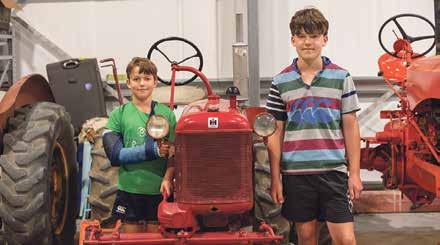
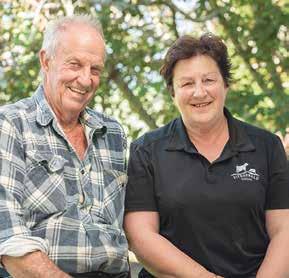
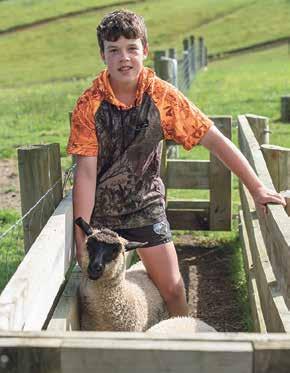

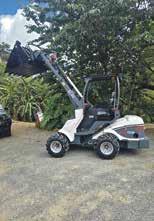




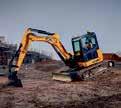









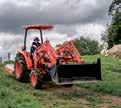
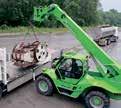
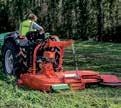















































a new challenge for an extra 30 per cent of the light vehicle market.









Bonnet has rocketed to New Zeakand’s third largest vehicle platform in nine months. In nine months, an app developed in Mount Maunganui by tech entrepreneur Steph Kennard has become New Zealand’s third-largest vehicle software platform.
Steph says Bonnet will e ortlessly track RUCs for the 70,000 EVs on the roads. “If you haven’t had to deal with RUCs before, Bonnet will do the work for you, accurately and automatically,” says Steph.

Bonnet helps businesses manage vehicle admin, including reminders for registration, servicing, Road User Charges, Warrant of Fitness and Current of Fitness in one location. Steph says the app seamlessly integrates the vehicle admin of one to 1000, or more, vehicles into an automated, central platform. More than 55,000 vehicles have been uploaded to the site since its launch.

Bonnet has also launched a desktop version and subscription model, making it easier for businesses to manage several vehicles from the o ce. Users can e ortlessly login with their existing Bonnet app credentials to view their vehicles on desktop including viewing and booking servicing.
e update allows for
“We’re thrilled to have made such a di erence to vehicle administrators in such a short time. We hope to be Kiwi’s vehicle platform of choice in the coming year, particularly with our new updates,” says Steph. Bonnet is NZ’s only free RUC management tool. Bonnet automatically calculating RUCs takes the guesswork out of mileage –which from April 1 this year, will be
dual monitoring, enabling drivers and admin sta to view odometer readings, RUCs and service notes –providing o ce sta with a bird’s eye view of the entire eet.
Steph says the Bonnet web portal is a game-changer for businesses managing several vehicles on the road at any given time. “ e subscription model kicks in for three-plus cars and gives businesses a cost-e ective, seamless way to manage eets while still allowing the public to use the tool for free.”

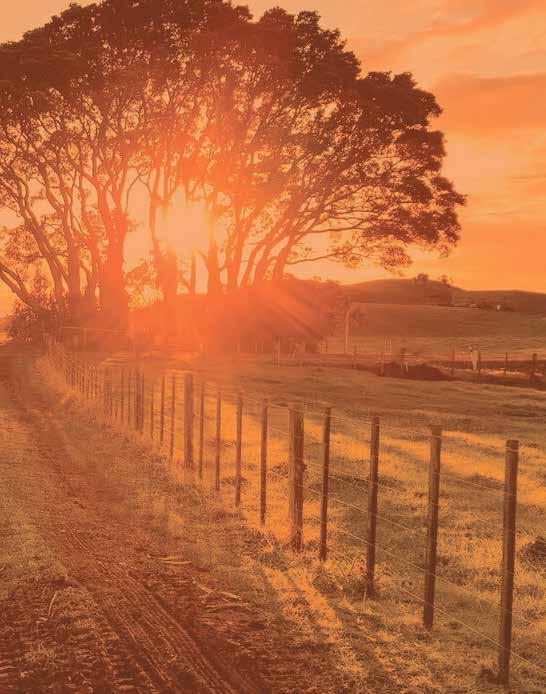
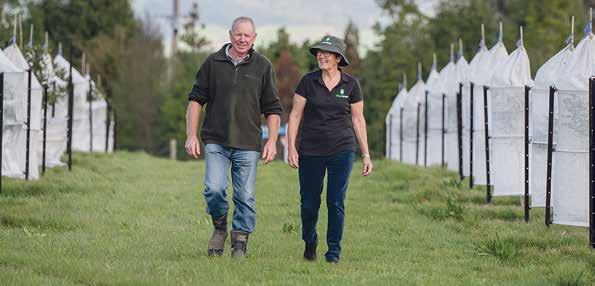
we decided to take on the challenge,” says Paul.
So 1500 grafted trees were ordered from the Torere nursery for delivery in stages and during the 12-to-18-month wait, there was time to ready the ground for planting, get fertiliser advice, and find some wind and frost protection for the young trees.
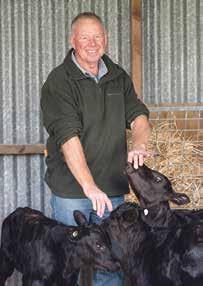
The couple, both from farming backgrounds, met through friends in 2000, and quickly realised that although their working lives had been nonfarming, they both longed for a rural life.
“We started off our rural lifestyle with five acres near Karapiro and converted a largish stable block into cosy living quarters,” says
Both continued with their full-time jobs, Helen with her dietetics and Paul working shifts at Kinleith pulp and paper mill.
“We spent any spare time planting an orchard and growing anything edible. We raised a few calves each spring to help pay the rates and keep the grass under control,” says Helen.
By 2006 they realised five acres wasn’t big enough and jumped at the chance to buy 20 hectares and a house from a neighbour and sell the five acres. This extra pasture put them in a position to take on grazing dairy heifers.
In 2015 they took an opportunity to buy another neighbouring 20 hectares and house.
“The house and a few acres were subdivided off and sold within the family, which meant we now had grandkids nearby. I was also able to have horses in my life again and share that with my granddaughter,” says Helen.
She retired from her dietetic career in 2018, to work on the land full-time. Paul continues working four days a week at Kinleith mill.
The couple started looking into other options for their land, reducing stock numbers and introducing a commercial horticulture venture of some sort.
“Initially we considered organic gold kiwifruit, but it was difficult and expensive to get a licence to grow them,” says Paul.
They attended an open day at Torere Macadamias near Ōpōtiki and were able to meet growers Vanessa Hayes and Rod Husband, tour the orchard and talk through the growing processes.
“After researching the climate in Karapiro, having soil tests done, calculating how many trees we would need for a viable commercial orchard and the costs,
“Covid-19 happened right in the middle, and we thought the project would be delayed, but we were delighted that farming life continued and once all the lockdowns were over, Vanessa and Rod had our first delivery ready in October 2020,” says Paul.
“The family enjoyed helping us plant the first 500 trees, with everyone having a turn at using the shovel and wheelbarrow,” says Helen.
It takes four years of nurturing for the trees to mature and produce their first nuts.
“That first hot summer, in desperation I filled up our 400 litre calfateria, towed it up the hill behind the quad bike, and watered each plant,” says Helen. They lost a few trees along the way and they both admit it has been a very steep learning curve with much more still to learn. There are options for the use of the grass strips between the rows including mowing for hay and grazing for the horses while there are still covers on the trees.
Internet searches for suitable wind and frost protection didn’t find anything that was appropriate, so Paul took matters into his own hands.
“Apart from buying frost cloth, my prototypes were made from no. 8 wire, wire posts and clips that we had around the farm.
“I found that a circular shape was more robust in the wind and makes mowing easier,” says Paul.
When No.8 wire proved to be too soft, Paul started using high tensile no.8 wire. Helen kept busy sewing the initial 500 covers. As winter frosts hit, the covers proved to be effective, also allowing easy access for
weeding, mulching and a straightforward, fast way to open the tops to allow sunlight in on hot days.
Their venture went commercial in 2022 under the name Vitalitree, selling locally in the Waikato and BOP as post-Covid freight costs are challenging. The sewing is now mostly outsourced, allowing more time for orchard management. The couple entered the Innovation Awards at the 2022 Fieldays, and while they didn’t take home an award, there was much interest in their product.
Spring 2023 was cause for excitement as the first racemes (flower sprays) appeared, a sign that things are on track and the trees are healthy and thriving, but the patient wait for the first harvest will continue to 2024.

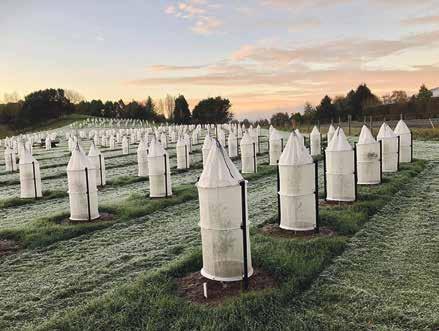




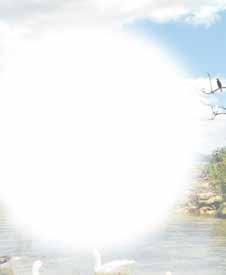







NZ Adventures continues to o er a range of self-drive 4x4 back country tours across the South Island.
e 2025 line-up o ers nine tours –although several of the trips are already fully booked as waiting lists from 2024 roll over into the new season, says NZ Adventures’ Connie Crickett.
e High Country Heritage tour is a long-time favourite. “ is six day – or seven-day in March – trip in whichever format takes participants down the eastern foothills of the Southern Alps through sheep and cattle stations and DOC reserves and back country roads from Blenheim to Cardrona.”



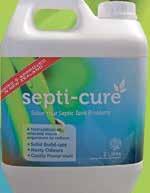


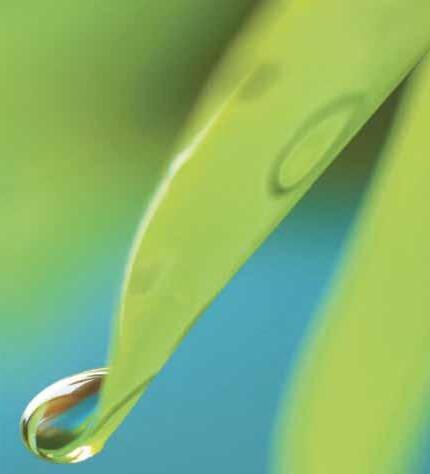


e West Coast Explorer is another of the originals – and about as di erent from the more easterly trips as it gets, travelling ve days from Hanmer Springs to Greymouth from the brown tussock lands of North Canterbury deep into lush rainforests of the West Coast region.
e 46 South is a newer trip in the line-up but well-established as a stand-out favourite. “ is trip follows an imaginary line across Southland from the hill country and coastal cli s of the Catlins through fascinating variations of central Southland and into Fiordland before turning north to nish in Central Otago,” says Connie. Trax of Gold is NZ Adventures’
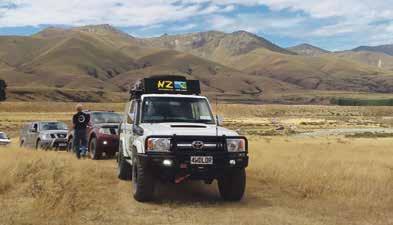
e South Island’s various types of terrain will intrigue you.
newest trip. “Follow the old tracks of South Canterbury, North, Coastal and Central Otago to explore the pastoral and mining heritage of a beautiful part of New Zealand. is takes six days from Fairlie to Alexandra.”
And the Big Sky is a six-day trip, starting in South Canterbury and exploring the mountain ranges of
the central south. It’s close to but di erent, and in more detail, than either the High Country Heritage or Trax of Gold trips. “It’s a very diverse trip from the mountains to the alpine basins all covered by a very big sky.”
For more information, visit: www.nzadventures.co.nz or email: info@nzadventures.co.nz
Last time we saw talked of how Magnesium supplements can be very e ective for cramps, especially night cramps and to help restless legs.


Magnesium is required by more than 300 enzymes including those needed for muscle contraction, energy metabolism and many others.





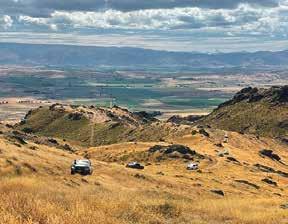



As a nutritional medicine practitioner, Magnesium is one of my most frequentlyprescribed supplements. is is because Magnesium works on problems quickly with bene ts obvious within days, especially with night cramp. Magnesium is critical for cardiovascular function. Magnesium helps regulate electrical impulses and helps support normal heart rhythm especially for those with Atrial Fibrillation. I’ve seen those with mild arrhythmia return to normal using targeted Magnesium plus appropriate dietary changes. I also use Magnesium, alongside naturally fermented Co enzyme Q10, for those on statin drugs to help prevent or reverse the common side e ects of low energy, muscle sti ness, pain and cramps.
Magnesium is also helpful when part of a nutrition programme for hypertension. Magnesium helps relax the smooth muscle that lines blood vessels, thus reducing blood pressure. It does this because Magnesium is a natural calcium channel blocker. When Magnesium levels are low, calcium over-stimulates heart muscle cells, or bres, resulting in heart arrythmias. Adding Magnesium helps to counteract this. For hypertension I like to combine supplemental Magnesium with a good multi-antioxidant, multi –mineral, multi-vitamin complex. is combined with a diet high in nitrates – especially beetroot –can produce real bene ts.
I prefer chelated Magnesium di-glycinate combined with naturally-extracted Magnesium from seaweed. ese, combined with rapidlyabsorbed Magnesium citrate means the supplement can work quickly for fast results. I suggest avoiding one-a-day supplements. Instead look for those where you can vary dosages, depending on your needs.
John Arts (Adv.Dip.Nut.Med) is a nutritional medicine practitioner and founder of Abundant Health Ltd. For questions or advice, call John on 0800 423559 or email:
Six months into the Potatoes New Zealand chief executive role and Kate Tru tt has embraced the challenges and opportunities with enthusiasm.
With a wealth of experience in the horticulture industry spanning 20-plus years, Kate decision to vie for this coveted leadership position has proven a resounding success. And she hasn’t looked back, travelling the length and breath of the New Zealand engaging with growers and industry partners – Kate is making her mark in the horticulture industry.
Benefit growers
“ is opportunity has allowed me to really utilise all my experience and expertise developed over time. Working with industry it is clear that Potato New Zealand needs to really drive the industry strategy with guidance from our board and for the bene t of our growers,” says Kate. “I am encouraged by what the future holds, and the direction New Zealand’s potato industry is heading and am excited to be
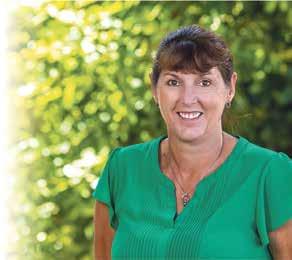
leading the charge as an integral part of it.”
Heading up a team of six experienced sta , Kate is committed to listening, enabling and promoting better outcomes for the New Zealand potato industry.
Member support
As the focus for the Potatoes New Zealand team shifts to the year ahead, one of their primary goals includes garnering member support for the levy order and presenting the nalised strategy as well as business plans to propel the industry in the right direction. With the levy order vote

scheduled for April-May 2024, Kate and her team are rallying grower members to actively participate in shaping the future of New Zealand’s potato industry.
Kate is optimistic about the vision for the sector, which is ‘End to End Value Creation’. ere is no resting for the Potatoes New Zealand team as in the coming months they will be working diligently towards the industries objectives, guided by Kate’s leadership and a shared vision for potato industry that is growing together. For more information on Potatoes New Zealand, visit potatoesnz.co.nz
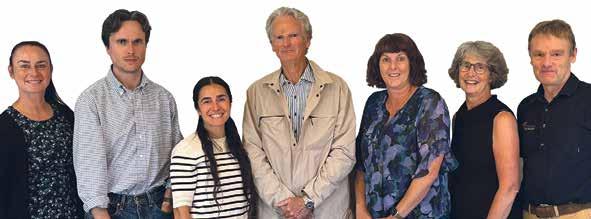

Have you ever thought of how you can prepare your home or property for extreme re danger ahead of time?
Fire and Emergency New Zealand has the following advice for those living on or near open land areas who want to reduce their re risk.
Keep vegetation short and green around houses. Trim trees away from buildings. Ensure you have a means to escape your property in the event of a re. Ensure your RAPID or rural address number is visible at the entrance. Make your home’s accessway is wide enough – so 4m by 4m – for emergency service vehicles to use.
Removing dead vegetation, including back mulch and straw from
near buildings, is advisable. Clean gutters so hot embers can’t lodge in leaves and other debris. Ensure stock are moved into places of lower risk in the event of a wild re. Ensure farm equipment is in good condition and tted with a re extinguisher. People can also grow low ammability plants on their properties. And, have a wild re emergency household plan. Find out how to set this up at: www. reandemergency.nz/when-wild rethreatens
Also, check local re danger before you light a re or do anything outdoors that could create a spark. See: checkitsalright.nz
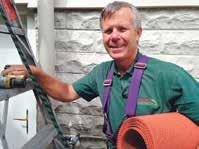





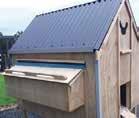




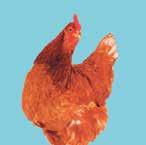




Hot on the heels of a plea from the Parliamentary Commissioner for the Environment for more stable funding for monitoring freshwater quality in New Zealand’s rivers, a new research paper suggests such funding needs to increase ve-fold to enable more frequent monitoring, or refocus on monitoring fewer sites more frequently
Aotearoa will not know if our water quality is improving for another 20 years unless we make a large investment in our water quality monitoring systems, nds
a paper published in January. Early-January, Parliamentary Commissioner for the Environment Simon Upton pointed out the risks caused by a lack of stable funding for monitoring freshwater quality in New Zealand’s rivers, in a public letter to Judith Collins, Minister for Science, Innovation and Technology.
Such funding needs to increase ve-fold to enable more frequent monitoring, or refocus on monitoring fewer sites more frequently, suggests the journal paper, published by the Nature Publishing Group in ‘Scienti c Reports’.
e research, funded by the Our Land and Water National Science Challenge, found that our current national monitoring regime doesn’t sample our rivers often enough to provide an accurate re ection of contaminant concentrations. For example, if a river is monitored monthly, and this routine monitoring coincides with above or below average rainfall for a couple of months, this will distort the average contaminant concentrations recorded. Current policy aims to begin showing improvements in freshwater quality within ve years and bring waterways to

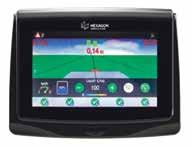
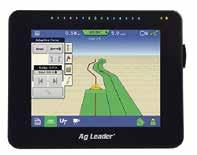


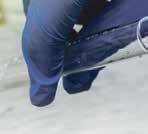


a healthy state within a generation (around 20 years).
Across the country, actions are being taken by community groups, farmers, iwi, and councils to restore the health of our rivers, lakes and groundwater.
Our ability to link these on-farm actions with improvements in water quality is limited by our monitoring network, says the paper’s rst author Professor Rich McDowell, chief scientist at Our Land and Water.
“Getting both monitoring locations and frequencies right is critical if we want to con rm whether local freshwater restoration actions are working,” says Dr Olivier Ausseil of Traverse Environmental, leader of the Monitoring Freshwater Improvement Actions research programme.
“We rely on the existing water quality monitoring networks to tell us whether water quality is improving,” says Dr Olivier Ausseil, “but the xed monitoring locations and frequencies o ered by these networks mean it can take a long time to detect improvements, and that the link between cause and e ect can be di cult to establish.
“For example, a group of farmers may be making changes to their farms to reduce nutrient losses to streams passing through their farms, but if the closest monitoring site is downstream in the ow of the main river it may not detect any improvement.”
e national-scale analysis has shown that New Zealand’s current freshwater monitoring regime could detect change in nutrients and clarity in 20 years – on average – for more than 95 per cent of monitored sites, but sampling needs to occur twice as frequently to detect changes in E. coli within 20 years. is would increase the annual cost of sampling by 4.1 times. To detect change in ve







years, we would need up to ve times as many samples, which would increase the annual cost of sampling by 5.3 times.
To reduce costs, investment in more frequent monitoring could be focussed on a mix of sites: those where changes in water quality occur rapidly and those that are representative of longterm land use. Emerging sampling technologies also have the potential to reduce costs.
“Our analysis isn’t a criticism of the existing monitoring networks, and we don’t suggest that high-frequency monitoring should be implemented everywhere,” says Olivier.
“However, it does illustrate that getting both monitoring locations and frequencies right is critical if we want to con rm whether local freshwater restoration actions are working.”
e research team has created a Monitoring Freshwater Improvements tool to help catchment groups, farmers, iwi and local and central government design freshwater monitoring programmes that can detect improvements in water quality in response to speci c freshwater restoration actions.
Over time, improved monitoring programmes could give con dence to farmers and those responsible for catchment water quality that the right actions are being put in the right place. For more information, see:
McDowell, R.W., Noble, A., Kittridge, M. et al. Monitoring to detect changes in water quality to meet policy objectives. Nature: Scienti c Reports (22 January 2024); and the Monitoring Freshwater Improvements tool at: monitoringfreshwater.co.nz
Source: https://ourlandandwater.nz/news/more-investmentin-water-quality-monitoring-is-needed/ Author:
McAleer



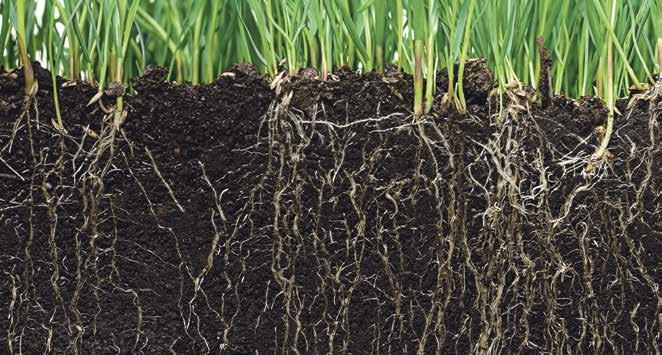


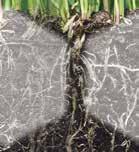









Phosphates are a vital element for all living things including plants. But it can be di cult getting su cient phosphate to plants without wastage to the soil or waterways. One solution is to choose a phosphate fertiliser that can mitigate these issues.
ere are several types of phosphate fertilisers. Two examples are ‘Super’, also known as superphosphate, or monocalcium phosphate, and ‘Dical’, or dicalcium phosphate. Most farmers and growers will have experience with the former, although perhaps not with the latter. e main chemical di erence between these two fertilisers is the amount of calcium in the phosphate molecule. Super has one calcium ion attached, while Dical has two. e result is the two fertilisers behave di erently in the soil.
One of the di erences between Super and Dical is their solubility. Super is highly soluble. While this means the phosphate is immediately available to the plant as soon as it is applied, it also means the phosphate is prone to loss and wastage should adverse weather occur soon after application. Dical, on the other hand, is not soluble. Although it is easily broken down for the plant to take up, it is not susceptible to the same degree of loss and wastage – no matter the weather conditions.
Another distinction between Super and Dical relates to the acidity they create in the soil, especially
acidity around the individual phosphate granules. When Super is applied, it can cause the zone around the phosphate granules to become very acidic, as it has a pH of 2. is high acidity encourages the phosphate ions to bond strongly with other ions in the soil such as Al (aluminium) and Fe (iron). is is a problem because the phosphate is then ‘locked up’ or xed, and plant roots can no longer access it when they need it.
However, with Dical, which has a much higher pH of 4.5-6.2, soil xation is far less likely because the zone around the phosphate granule is far less acidic.
So, the phosphates in Dical are still available to plant roots, and there is less wastage of nutrients.
Because the phosphates in Dical are less prone to xation, it’s the ideal fertiliser for certain soils. ese soils are known for their capacity to bind their phosphates with Al and Fe ions. is information can be found on most soil tests as ASC, or Anion Storage Capacity.
Allophanic soils, known as ash or volcanic soils, bind strongly, so have a high ASC reading. According to Landcare Research, allophanic soils are mostly found in the volcanic ash and weathered volcanic rock in the North Island, and are common in parts of the Waikato and Taranaki, and also found in the King Country and Bay of Plenty – see Landcare Research’s ‘Soils Portal’.
Sedimentary soils also bind Al and Fe ions but less strongly, so have a low-medium ASC score. Landcare
Research maps show these soil types are found throughout New Zealand, particularly in the Taranaki and Manawatū regions.
So, for those of us who farm these types of soils, a phosphate fertiliser like Dical that releases its nutrients more slowly with minimal xation can be the perfect option.
Given there is less nutrient wastage with Dical, it follows that less can be applied. As a rule of thumb, 25-30 per cent less Dical compared to typically-recommended rates for Super can be applied on allophanic and sedimentary soils. at’s not only avoiding nutrient wastage, but






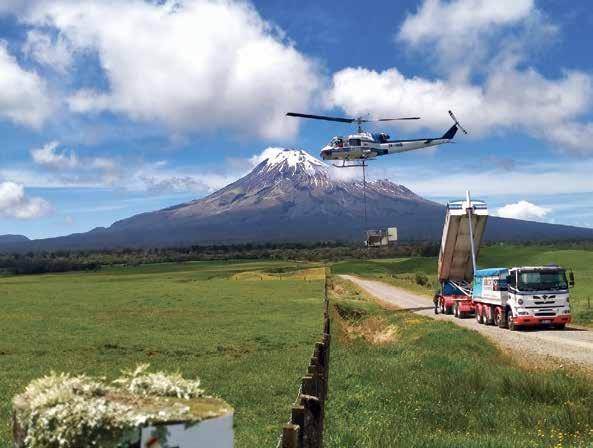
Fertco’s top selling granulated dicalcic phosphate fertiliser




• Less water soluble so less prone to run-off and wastage
• Helps maintain soil pH because less acidic around phosphate granules
• Granulated so more accurate product placement
• Suitable for pasture and a wide range of crops
• Ideal for aerial or ground spreading P

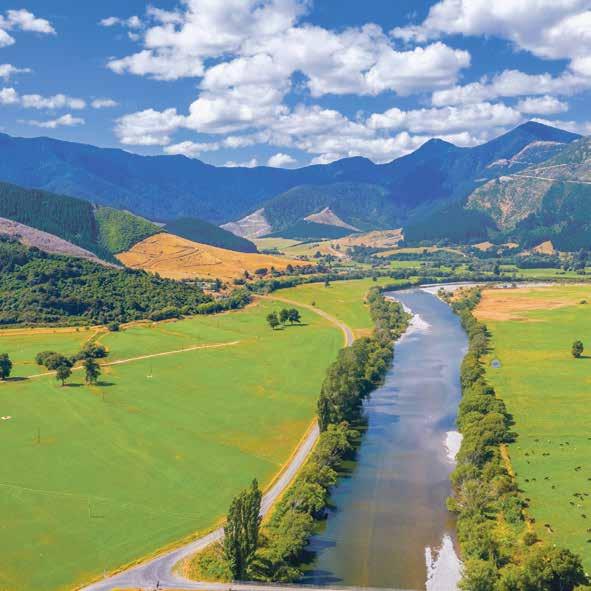




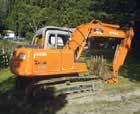


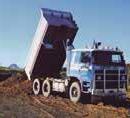


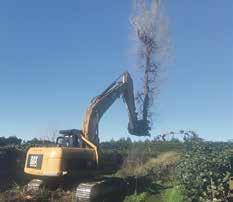
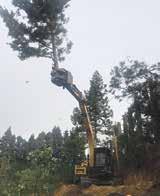
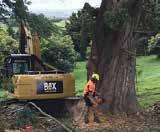




Bax Contractors is a well-established tree removal business working throughout the greater Waikato and Bay of Plenty.
Owners Pete Johnson and Marcus Paprzik have a combined 40 years’ experience in arbourculture, land clearing and the forestry industry.
“Over that time we have undertaken and overcome pretty much every challenge you could face when it comes to tree and land clearance,” says Pete.
“ e depth of our experience often means that the solution – and cost – clients initially envisaged is di erent. But in every case our prime motivation is to solve the problem and leave the site clear and tidy.”
Pete, a quali ed arborist, says he and Marcus are personally involved in every job. “ at’s important
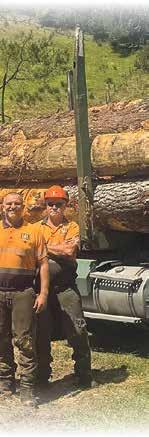
– we want our clients to know the buck stops with us. We visit the client, advise and quote – the person who quoted remains involved in the actual job – so we have personal oversight from start to nish.
“ is attention to detail and focus on doing each job e ciently and e ectively generates repeat business.
“In essence our focus is on doing the job right, every time and building lasting working relationships – and lots of word of mouth!
Pete is based in the Waikato and Marcus is in the Bay of Plenty – and they say their expertise is available “across New Zealand”. “We will do anything as long as we can get onto the site.”
Bax Contractors specialises in all aspects of tree and land clearance; they chip, mulch and stump grind and are suppliers of rewood.






Zespri has released its nal forecast for the 2023/2024 season with record per tray returns forecast for Green, Organic Green, SunGold and RubyRed Kiwifruit.
e forecast, released last month, has Green at a record $9.44 per tray, signi cantly up from last season’s nal Orchard Gate Return of $5.78 per tray.
Forecast SunGold Kiwifruit returns are also at a record level of $12.62 per tray, well above last season’s nal OGR of $9.97, while Organic SunGold Kiwifruit is at $14.21.
For Zespri RubyRed Kiwifruit, the forecast average per tray return is at a record $26.54, up from last season’s nal OGR of $22.27.
CEO Dan Mathieson says the signi cant e ort undertaken by the industry to lift fruit quality and reduce quality costs had been a key factor in the improved returns, along with strong consumer demand for Zespri Kiwifruit.
“ e lift we’ve seen in all of our per-tray returns is a real credit to the hard work that’s taken place across the industry and throughout our global supply chain to improve quality.
“It’s really helped our markets to maintain strong run rates and maximise value while closing out the season, with all categories other than Organic SunGold Kiwifruit expected to deliver record per-tray returns.
“While we’re always looking to increase the value we’re returning across all of our varieties, it’s particularly pleasing to see a real lift in our Green returns. at’s been driven by the increased value our teams have secured from lower volumes, especially in Europe, as well as strong market performance in Japan and North America.
“We’ve also seen strong demand for SunGold Kiwifruit and RubyRed Kiwifruit has continued to perform strongly, which we expect to see continue as RubyRed becomes the rst of this year’s crop to hit stores soon. With a crop of around 193 million trays expected to be shipped in 2024/2025, Dan
e destructive claws of Cyclone Gabrielle are still hammering Te Tairāwhiti kiwifruit growers a year after the event.
Vines which looked healthy in early-summer are either completely collapsing, leaves are going yellow, or fruit is going soft and shrivelling on the vines. e local NZ Kiwifruit Growers kiwifruit representative and orchard owner Tim Tietjen has put a conservative estimate of a $1 million cost to the Tairāwhiti region.
Twenty or so of the region’s 50 orchardists appear a ected to some extent. e worst have lost everything; others were removing fruit prior to this month’s harvest to reduce vine stress, and per hectare tray production could be halved. “So they’ve spent all the money, pruning, doing all the sprays, bees in for pollination, that sort of thing, and then the orchard’s just collapsed as the stress has come on. So yeah, a real hit,” says Tim. He outlined the position for his business where 20 per cent of the orchard will need to be replanted,


and a further 40 per cent will have about half the normal number of trays. “I will be down to about six or seven thousand trays (per hectare) so I will be trying to nurse them through.” At that production level his orchard will barely break even.
Tim says growers knew vine stress could take time to appear, but this is a massive surprise and right up until Christmas he was cautiously optimistic with good fruit numbers and vines looking healthy.
“But I came back from a short summer break and shocked at what I saw, how quickly things had gone south. Catching up with growers there’s a lot saying how they’re hating going out into the orchard at the moment. It’s depressing looking at a whole lot of sick plants, small fruit that’s not going to get harvest. So there’s concern around mental health for growers and that sort of thing.”
*Read this story in full at: https://www.rnz.co.nz/ news/country/509851/cyclone-gabrielle-aftermathhits-kiwifruit-growers-the-orchard-s-just-collapsed RNZ Country
says the forecast is an indicator of the sort of value that could be achieved by providing consistently high quality fruit.“We know that when we get good fruit to market it sells and sells well, so continuing to focus on providing our customers and consumers with great kiwifruit throughout the season will again be our focus.
“As well as the focus on per tray returns, we’re also looking forward to

seeing improved per hectare returns for growers in the coming season, with our February crop estimate showing a strong improvement in expected yields.”
At a per hectare level, forecast OGRs for all categories have increased against the previous forecast. Green and SunGold forecast OGRs are now above nal 2022 season returns, despite the season’s lower yields.

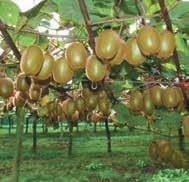
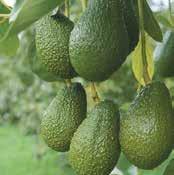
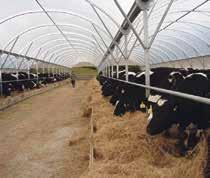
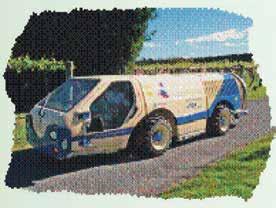
MyNameisNeilWoodward.
IamadirectorofZ-Contracting-wearefamilyrun business,ourteamconsistsofthree,beingmyself,my sonandmybrother.

Ourorganisationhasbeenestablishedforover18 years.Ihavebeeninvolvedin applyingcropprotection programmeswithinthehorticultalindustrysince1966. Wespecialisewithinthekiwifruitindustry, We have theequipmenttosprayorchardswithour two Atomsprayers and one recently purchased Tracatom Formula tractor which is also available for mulching and mowing

MyNameisNeilWoodward
IamadirectorofZ-Contracting-wearefamilyrun business,ourteamconsistsofthree,beingmyself,my sonandmybrother.
Ourorganisationhasbeenestablishedforover18 years.Ihavebeeninvolvedin applyingcropprotection programmeswithinthehorticultalindustrysince1966.
Wespecialisewithinthekiwifruitindustry, We have theequipmenttosprayorchardswithour two Atomsprayers and one recently purchased Tracatom Formula tractor which is also available for mulching and mowing
Our Atoms aresetupwithradarspeedsensors,this combined with fullyautomated sprayer controllers and three nozzle ringsenhancesapplicationef ficiency and accuracy.
We also useaquadbikeforstripweedspray applications.
Weholdallcertificatesneededtomeet Globalgap compliance.
Welookatallchallengestohelpensureweprotect yourcropwithexcellence.
Our Atoms combined three nozz accuracy.
We also useaquadbikeforstripweedspray applications.
Weholdallcertifi compliance.
Welookatallchallengestohelpensureweprotect yourcropwithexcellence.
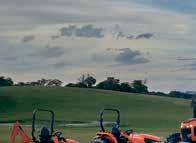

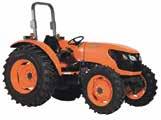
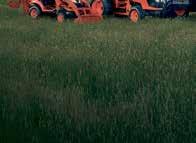
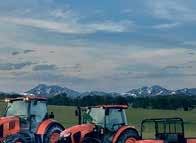








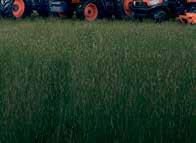











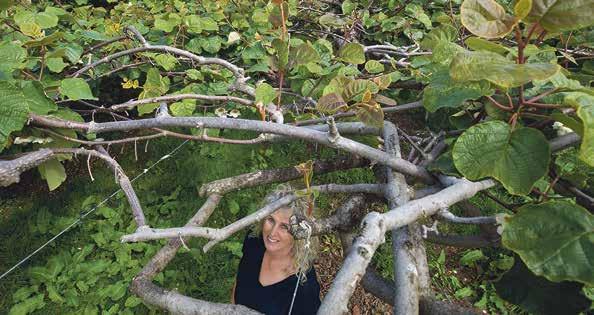
ere’s no more foggy 4am wake-up calls for Dave and Leigh Hannah.
e former Waikato dairy farmers turned orchardists are happy to have later starts to their days now they’re on an orchard in the Western Bay of Plenty.
our own dairy farm next door. Some years later, our neighbour approached us wanting to buy the farm – so we decided to nd somewhere warmer where there’s no fog.”
which is just a little green kiwifruit and avocado orchard. It’s a nice place to live and the house overlooks the harbour and the orchard below.”


“We sharemilked on various properties in the Waikato before more moving to Ngakuru just south of Rotorua to a larger sharemilking position,” says Dave.
“Eventually we were able to buy
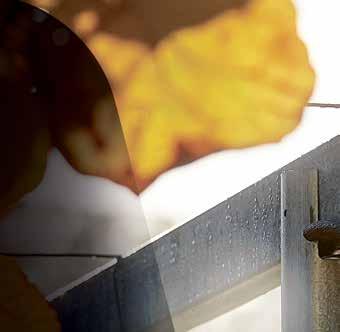

Both Dave and his wife, Leigh, had grown up in Tauranga so wanted to come back home. “We looked around at orchards but didn’t like those where the house was in the middle of the trees and [we] worried at one stage that we’d made a mistake agreeing to sell.
“But then we found this place on Kauri Point Rd, north of Katikati,
It’s the couple’s fth season on the six-hectare property. One hectare is planted with avocados, and the main income is from exporting the kiwifruit that covers around 3ha.
“We have a property manager who’s been looking after the trees here for about 15 years,” says Dave.
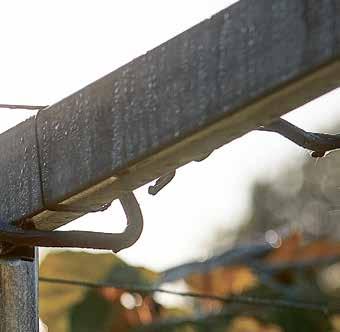
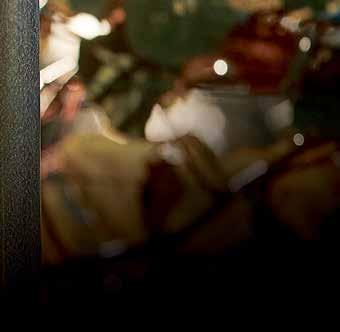

“So I just do the mowing, a bit of spraying, some maintenance and he looks after the vine work. I wouldn’t know what I’m doing so it works well. It’s a completely di erent lifestyle.”
“We were a bit lost when we came here,” Dave laughs. “ e alarm doesn’t go before dawn anymore. We don’t miss that part. Dairying is hard work. It’s a young man’s game.”
Dave and Leigh had friends in the fruit-growing industry and done plenty of their own homework before taking over the reins on the property. “ ere were no real surprises. Avocado prices are a little low at the moment but that’s farming. ey’ll come back up.”
Leigh and Dave have only made one change to the orchard. “We’ve gone early start with the kiwifruit,” says Dave. “ ere’s an incentive if you can pick the
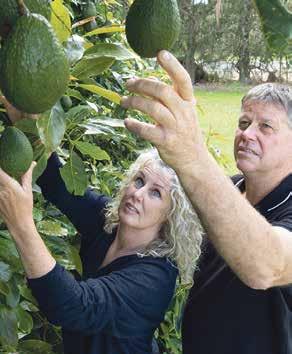
fruit in the rst three weeks of the season, so we’re probably one of the earliest green kiwifruit orchards to be picked around here.
“You’ve got to be in the right place with the right climate. e higher altitude orchards can’t do that but we’re only 50 metres above sea level so we can manage it. And this is an old orchard. Our vines must be at least 50 years old, so we’re well established.” e new pace of life has also allowed Dave to spend more time doing what he loves – getting creative making handcrafted homewares in his shed. He’s constantly on the lookout for timber that can be salvaged or milled and particularly enjoys breaking down wine barrels using the French oak timber to create beautiful pieces.
Oak
“I got a truckload of barrels once but they were dirty and old. I had to scrape the old wine o and some were completely buggered, to be honest. So I found a guy in Hawke’s Bay and I just deal with him now. I can t 20 on my ute and trailer, so it’s well worth a trip down to be able to pick them out myself. Oak is just a beautiful wood to work with and I use every part of each barrel.”
As a farmer, Dave’s attitude has always been: ‘Don’t throw it – x it!’
“I’ve made some cool furniture but I think it’s about the size. We sell a lot of smaller items like platters, cheese boards and table centrepieces. I have a few real estate agents who have standing orders for gifts they give away to clients.”
Dave gets huge satisfaction and enjoyment creating items from recycled native timber. “I have a container full of wood that I’ve collected. Someone’s given me old timber door and window frames.
“I also have this amazing Kauri that’s come from a swamp and could be hundreds of years old. I can blend them together but the main thing I use is the barrels. ere is nothing better than standing back and looking at a nished piece that will sit in someone’s home.”

www.gaz.co.nz

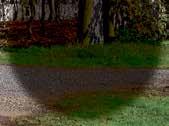

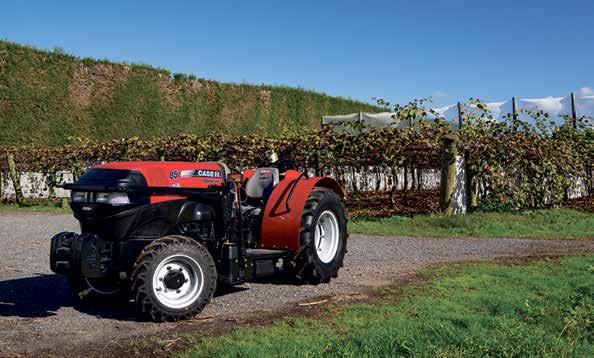


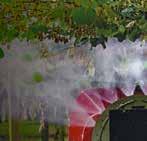
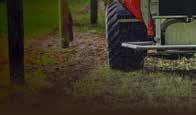



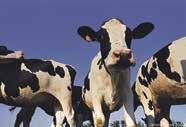
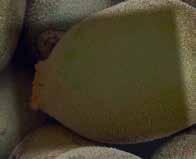



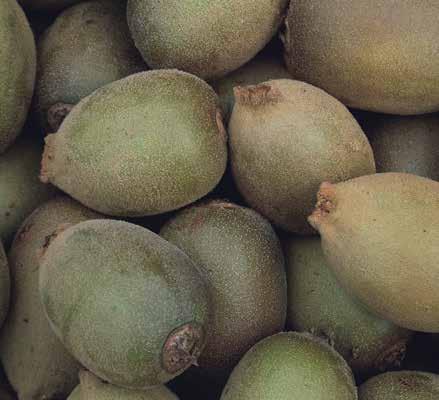


e base of any farming industry is the soil on which pasture and crops are grown. Our rst farming work was in the Bay of Plenty just below the Kaimai Ranges’ bush-line where the clearing of trees had recently stopped.
ose that had cleared the land knew the most productive pasture grew on
areas where the best bush had grown, and it’s the same throughout the country.
e valley oors and lower terraces were cleared before the steeper less productive land. However, pasture has a di erent fertility requirement to bush, and to maximise growth nutrient was required.
Consider the following from Grasslands of New Zealand by Sir E
Bruce Levy 1970 with the Foreward by Brian Talboys the then Minister of Agriculture.
“Sir Bruce showed that once the land had been satisfactorily drained and a reasonable grazing management imposed the greatest factor of all in promoting botanical changes in grassland was soil fertility.”
Phosphorus and sulphur inputs during the last 70 years have ensured there is very little country now that positively responds to the application of these two elements.

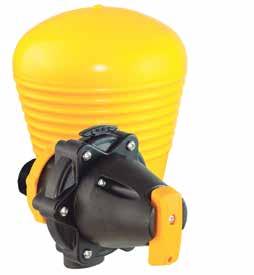
“He stressed the tremendous impact that the grazing animal had in pasture development sparked o initially by copious clover growth from topdressing grasslands with appropriate fertilisers. Under a high stocking density per acre, so that there is full utilisation of pasture growth, the dominant rye grass-white clover pasture approaches perfection in building soil fertility….”
What was obvious then and remains true today is that grazing animals have a positive impact on the development of soil fertility.
When we talk of soil fertility the key component is soil carbon and it is under-grazed permanent pasture that carbon is more rapidly sequestered than under any other form of vegetation.

e reason being that rapidly growing plants are regularly grazed, adding dung, urine, leaf and dead root on an ongoing basis. Carbon is continuously being added, and with abundant bene cial soil biology a portion becomes stable and resistant to loss
Liz Voorend
P 027 755 6501 | E farmsafety@wfss.co.nz workablefarmsafety.co.nz



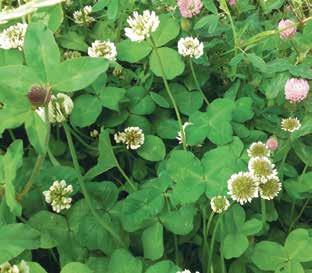


– even under the harshest environmental conditions. Steeper land becomes less prone to slipping, moisture is better retained providing stronger growth during summer.
ere is no downside to this process and the prosperity of New Zealand has pro ted greatly as a result.
How is it that now, within two generations, farmers are considered by many to be environmental vandals contributing to an increase in harmful warming gasses?
Where carbon is being steadily sequestered net carbon dioxide, methane and nitrous oxide are not increasing; and yet models have been developed that further tax the productive sector which we will, for the foreseeable future, all be dependent on for the bulk of our income.
However, as in all arguments, there is an element of truth. Not all pastoral farming is equal and the dairy sector is where the problem lies.
Synthetic nitrogen destroys soil carbon, releasing the nitrogen it is bound with for plant uptake. Burning soil carbon at a rate greater than it is being sequestered results in less growth, more expensive inputs, and lower pro tability.
The ONLY Health & Safety company that:
Brings the farm up to compliance standard
Organises hazardous substances, safety data sheets, inventory and plan
Provide easy to use templates
Provide on the farm follow-up services
NO MEMBERSHIP FEES!
Fixing nitrogen with clover does not do this. It’s a natural process where supply and demand are roughly equal with little nitrogen lost to groundwater. Quality and quantity go hand-in-hand. As pasture production increases under clover-dominant pasture, strong, resilient animals requiring less medication evolve. ere’s scienti c data to show land under intensive dairy in the Waikato has steadily lost carbon at the rate of 1 tonne/ha during the last 30 years; the time since the advent of regular applications of nitrogen. is process can be readily reversed, as an increasing number of farmers are discovering. Autumn is the ideal time to implement new soil fertility practises that immediately provide positive outcomes in all respects. New Zealand farming, Sir Bruce said: “still needs more and better grass, more and more stock, and keen farmers intent on bringing this position about….” He emphasised that greater farm production is not the responsibility of the farmer alone: it is a national responsibility.
To discuss this further, call Peter on 027 495 0041.
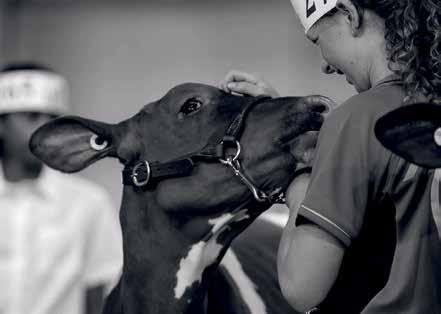
A New Zealand/Ireland joint research programme is aiming to better understand methane emissions from pasture-based farm systems after starting in February.
e four-year programme will see researchers, students, professors and database technology experts from DairyNZ and Ireland’s Agriculture and Food Development Authority, University College Cork and Irish Cattle Breeding Federation working together to quantify methane emissions from dairy cows in pasture-based systems.
DairyNZ principal scientist Jane Kay says they aim to determine the e ect stage of lactation and pasture species, management and seasonal growth have on base methane emissions, and how these factors in uence cows’ response to methane-reducing technologies. “ e joint programme strengthens our connection with Ireland and enables NZ to leverage current and future research. It also ts within DairyNZ’s wider research programme.
Both countries face national and market targets to reduce methane.
Kiwi farmers are among the world’s most emissions-e cient. Consumer and dairy supplier expectations are a driver for dairy farmers to continue reducing emissions, so NZ can remain competitive in the market. DairyNZ’s continued research supports that.
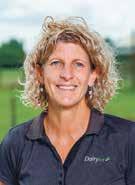
“Finding solutions to help farmers reduce emissions while maintaining on-farm pro t remains a research priority,” says Jane.
During the last 20 years potential technologies to reduce methane emissions have emerged from all over the world, says Jane.
“DairyNZ is focused on potential technologies that t within NZ’s pasture-based systems, such as early life intervention, which involves feeding a natural product to young calves, with the aim of reducing methane emissions for the animal’s lifetime. “ is is an attractive delivery mechanism for NZ, as it’s cost-e ective and occurs well before product processing, such as milk harvesting.”
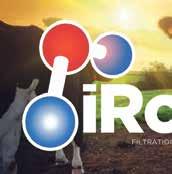

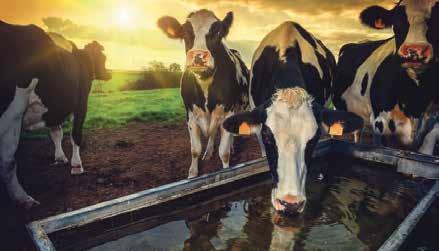
“ is wider programme sees our world-leading scientists working with NZ farmers, research organisations and commercial companies to develop workable and scalable mitigation solutions that can be widely adopted on-farm to reduce emissions in a sustainable and viable way.”
DairyNZ was awarded funding in 2023 for this work, as part of a pilot joint research initiative between New Zealand and Ireland. e programme will also develop a methane database for pasture-based systems to ensure emissions and mitigations are accurately accounted for at a farm and national level in NZ and Ireland.
Most Kiwi research on methane mitigation technologies is completed at Lye Farm, one of DairyNZ’s two Waikato research farms. Lye and Scott Farms enable scientists to carry out pasture, animal and farm systems trials under relevant conditions. is ensures the technologies and tools developed are practical and can be widely adopted into di erent farm systems. Farmers are involved in all projects, to provide their thoughts and advice on opportunities or barriers for adoption of these solutions into NZ farm systems.
For more information, visit www.dairynz.co.nz/ lessmethane

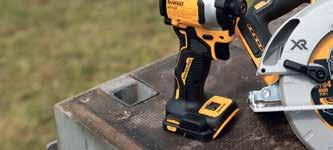

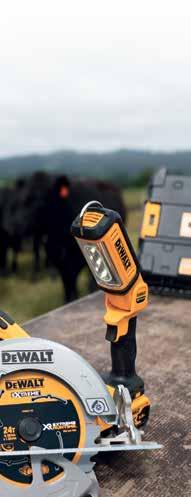

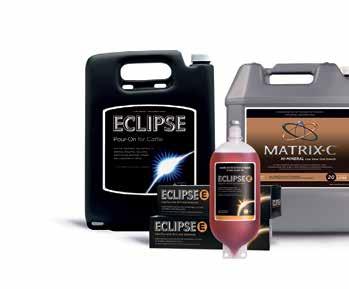


What a great end to the summer months, with NIWA announcing January was the hottest month in Whakatāne since records began in 1974!
As I write this column it’s midFebruary and I’m meant to be packing my bag in readiness for being parent
help at my son’s school camp. Another four days of hot sun is forecast, ensuring it will be a great time.
February has given us just 5.5ml of rain so far, compared to 68.5ml for the same period last year. e average soil temperature for the month is sitting at 21.3 degrees Celsius, which is one degree higher than last year. ese continual hot sunny days have







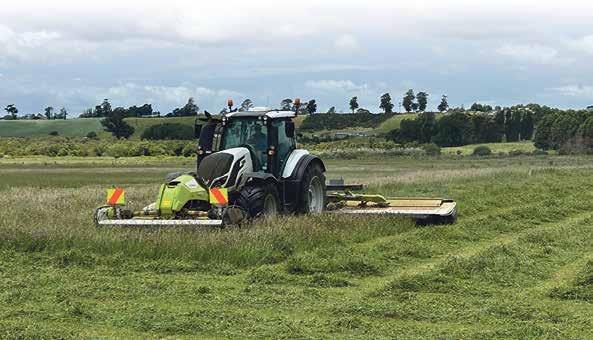
made me wonder if we’ll get a tail end drought of sorts. However, a lot can change in a couple of weeks in farming!
As a stock feed supplier I’ve felt a bit like someone trying to sell ‘ice to Eskimos’ when trying to sell feed to farmers this year. e abundance of feed is clear with record volumes of grass silage and bales made, and many farmers still have supplies of last year’s supplements. So, feed surplus aside, there are a few things worth considering. Now is the time for farmers to take advantage of reduced pricing for feed with some great deals particularly on maize silage.
ere is a di erence between the likes of maize silage, an energy source, and grass, protein, and a need for the di erent feeds at di erent points in the year for your animals. Palm Kernal Expeller on the spot market is still +$400/t, and once you add cartage, and gure it is 90 per cent Dry Matter, it works out to be about $0.50/kgDM. PKE has a place, but with low palatability the locally-grown natural feeds available are much better value. It will be interesting to see if PKE drops back at the Fieldays in June. If it doesn’t, we might just see renewed demand for grass silage and maize.
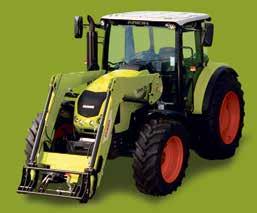
It was gratifying to see Fonterra increase the forecast payout on the back of increases in ve consecutive Global Dairy Trade events – the most recent being a 4.2 per cent lift. e 30 cent lift to a new midpoint of $7.80/kgMS is still under where the milk price futures are currently trading. However, dairy farmers in the Waikato and BOP must be happy with the season so far compared to what was initially forecast – a drought and low payout – and we can expect little to derail what is
looking to be a reasonable year.
It seems sheep farmers are still struggling big time with little improvement on the forecast for this year. Maize grain growers are also facing much lower prices this season as there turns out to be a large supply of grain following a good growing season. Currently there is a signi cant amount yet to be contracted to be sold. And with harvest only a few weeks’ away, growers will be starting to be a little nervous.
Farmers will now be needing to look at pasture renewal, conducting soil tests, and seeing what paddocks they will spray out to maybe plant an annual grass for silage in spring, and then to plant as maize. It is all about making the most out of the land you have to produce the most cost-e ective feed.
Turning to the housing market, I think the new Debt To Income measures the Reserve Bank is proposing to introduce are going to have a massive dampening e ect on the market, which is obviously what they want. As a property investor I was starting to get excited about the prospect of a 10 per cent lift in house prices this year but can now only think that the DTI will make it nearby impossible for a large portion of investors to be able to buy an additional house as most will be well outside of the DTI ratio required already. Maybe this is the end to New Zealand’s most-loved form of investment?
We are still able to source maize silage for anyone looking for a lastminute purchase, hay is in full swing and we have plenty of straw and milking quality grass silage too. Now is a good time to buy while the price is right and giving you a bu er if we should experience a drought.



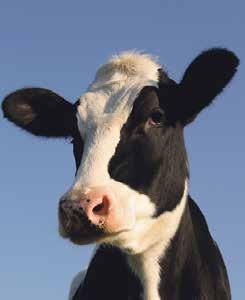









Formerly known as
Many times in the past we’ve been asked to assist someone by providing a plan for a subdivision that they propose to undertake. Worse than that, we’ve been asked to complete a subdivision for which an inexperienced person has already obtained resource consent from council. is process may have been started on their initiative or indeed encouraged by a council o cer keen to help them out. Either way, DIY never quite works out to be easier or, as often hoped for, cheaper. e nal legal stage of obtaining the all-important new titles for the subdivision can be as important as the early assessment stage. And an expert in the process is a must at all stages. Without knowledge and experience of the entire process, it can be impossible to reach the end goal without signi cant rework, delays, or in the worst case failure. A project manager with a specialist subdivision company will know the entire process because they have been there before. Utilising previous
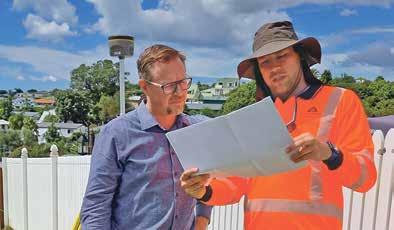
stormwater, wastewater and the internet, as appropriate. If there are any problems with providing all this, then you can expect your project manager to go into bat for you and resolve the issues, wherever possible.
project manager to avoid delays, potential rework and budget blowouts.
If you’re contemplating subdivision, you should engage a specialist subdivision company. ey can then team you up with a project manager – an essential aid to navigating the complexities of subdivision.


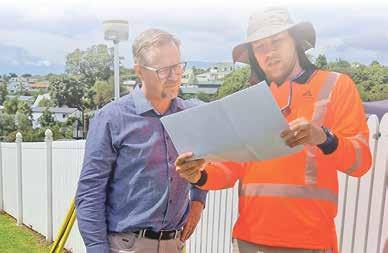
So there are plenty of places to get tripped up if you don’t understand the local rules or what reports and contractors your council will accept for the work that needs to be done.
is all requires tight management and regular supervision by an experienced
If you’d like to explore your options, we are happy to give you the time to discuss the full potential of your land –so feel free to give us a call and discuss your situation.
experience, they will be able to guide the project through the various layers of red tape to achieve your nal goal – new titles and money in the bank, or a separate title for the family.
Subdividing land might seem easy, when you see the nal result in the marketing images with a nice entrance and fenced-o section. However, it is never without its challenges.
Knowing the various tasks involved, the timeframes and what experts are needed to support the application is not something that comes together the rst time up. at’s where the project manager helps out.
Contacting your local council

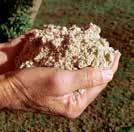

or looking on their website can give you an indication of whether they might entertain a subdivision in your locality. However, the rules are never straightforward. If you’ve seen other subdivisions taking place in your area, that is also a clue.
Numerous rules and regulations must be considered and complied with, in addition to the size component. ese rules require specialist reports relating to ecology, site stability and drainage, access, contamination, land productivity etc. Your council will require engineering certi cation of a stable building site and the construction of safe access from the road. ey will also specify connections must be established to water, power,


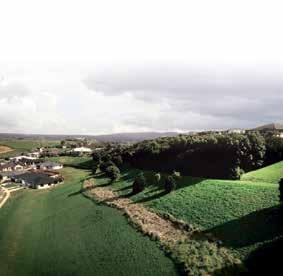


0800
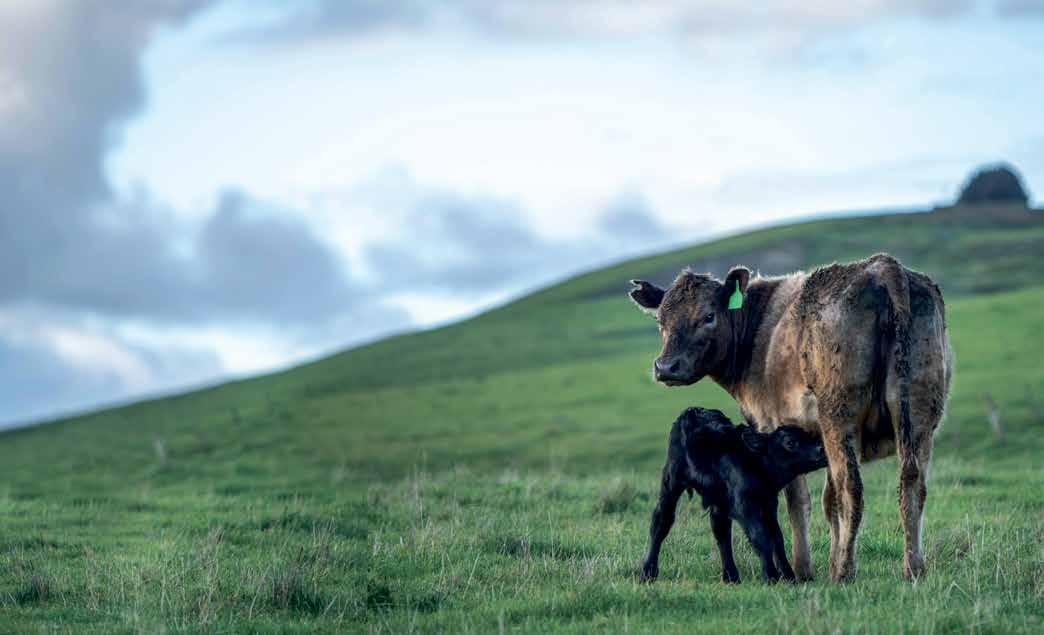
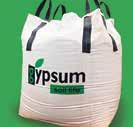

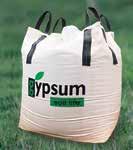


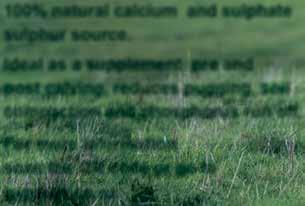

Katikati’s Project Parore is hot on maintaining good sh passages in the Western Bay of Plenty.
“Little critters are a key indicator of good stream health so it’s vitally important landowners check their streams for impediments in the stream ow,” says Project Parore general manager Brodie Davis.
New Zealand has more than 50 species of native freshwater sh and several sports sh. Many species, like whitebait and eels, need to move between freshwater and the sea to complete their life-cycles. As such, NZ waterways need to be carefully managed. About 70 per cent of NZ’s native sh are threatened or at risk.
“If their movement up and downstream is delayed or blocked completely, sh may not be able to get to the habitats
they need to complete their life-cycle. eir numbers can be reduced, or they may be completely lost from a stream.”
Fish passage connects habitats necessary for freshwater sh and other downstream organisms like frogs, shrimps and aquatic invertebrates to complete their life-cycles.
Ensuring sh can move within, over and through physical structures, as well as managing the water quality and ow conditions in a waterway that may impede passage, are essential for healthy sh populations.
To do this, Brodie says a stream should provide safe, easy up and downstream movement for all species and their various life stages, have di erent water conditions, and natural hiding places for sh; and enable natural processes to continue, such as sediment and debris moving downstream. Culverts, weirs, fords, dams and tide and ood gates are common in streams and rivers. But if are not designed, maintained and installed correctly, these structures can stop sh moving up and downstream. “Disconnections between the water upstream and
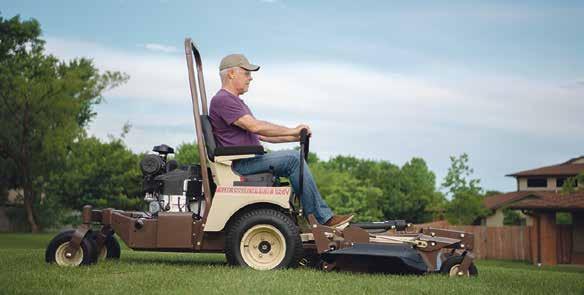
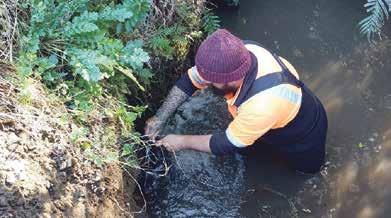
Project Parore’s Restoration, Enhancement, Protection crew member Tejay Samuels installing a sh ladder in a culvert. Photos: supplied.
downstream of a structure can stop or slow down sh passage. “ is can be caused by culverts with a signi cant drop at the downstream end, extremely long structures, perched (undercut) structures, fast water ow through a structure and weirs too high for sh to navigate. Fish can also be sucked into water intakes if they don’t have suitable sh screens or are not designed to keep sh in the waterway.”
Brodie says Project Parore has the expertise to help landowners introduce and maintain good sh
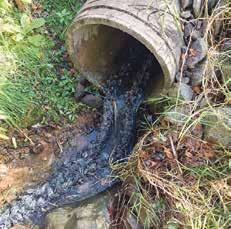
passage within their waterways.
“If you have any of these challenges and or disconnections on streams on your land – come and see us and we can arrange to come and take a look. Better still, send us a picture of the barrier before you come so we can get a heads up.
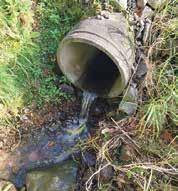
Tools to mitigate some challenges include: sh-friendly oodgates, culvert ramps, culvert ba es, mussel ropes, crawling mats and downstream landscaping. Sediment loss and predators also a ect both spawning numbers and sh passage. Contact Project Parore at: https://projectparore.nz
If you’ve owned a few di erent brands of ride-on mowers over the years and have been disappointed with the product or after-sales service, then it’s time to consider a Grasshopper mower.
“As soon as you mow with a Grasshopper, you can tell it was designed by someone that knows a thing or two about cutting grass. Grasshopper o ers a wide range of mowers for all situations but they don’t manufacture anything else but mowers.
“ is laser focus and a refusal to cut corners when it comes to testing and production ensure that quality and customers are retained.”
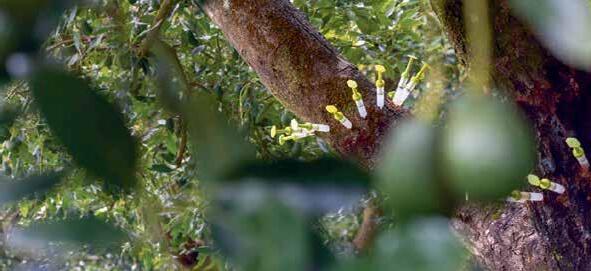

Grasshopper is one of the original zero-turn mowers. ey have been made in Kansas, USA, since 1969 and are known as one of the most reliable mower brands available. Positive reviews online are not hard to nd and many USA dealers say Grasshopper are the mowers they see in the shop the least.
Tauranga based ZTR Mowers has been importing zero-turn mowers since 1987 and the Grasshopper brand since 2010. Sales manager Andrew Peacocke says what sells people on a Grasshopper initially is the robust build, exceptional cut and operator comfort. “But what keeps them using a Grasshopper is the product reliability, responsive after-sales service and spare parts availability.



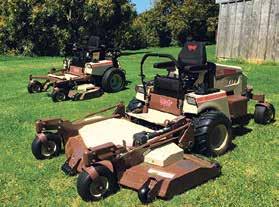
For more information on how a Grasshopper can make your place look top notch year-in year-out, call ZTR Mowers on 07 543 2700. Grasshopper o ers a wide range of mowers.
When they tell you a Grasshopper is the last mower you will ever own, it sounds like they mean it!
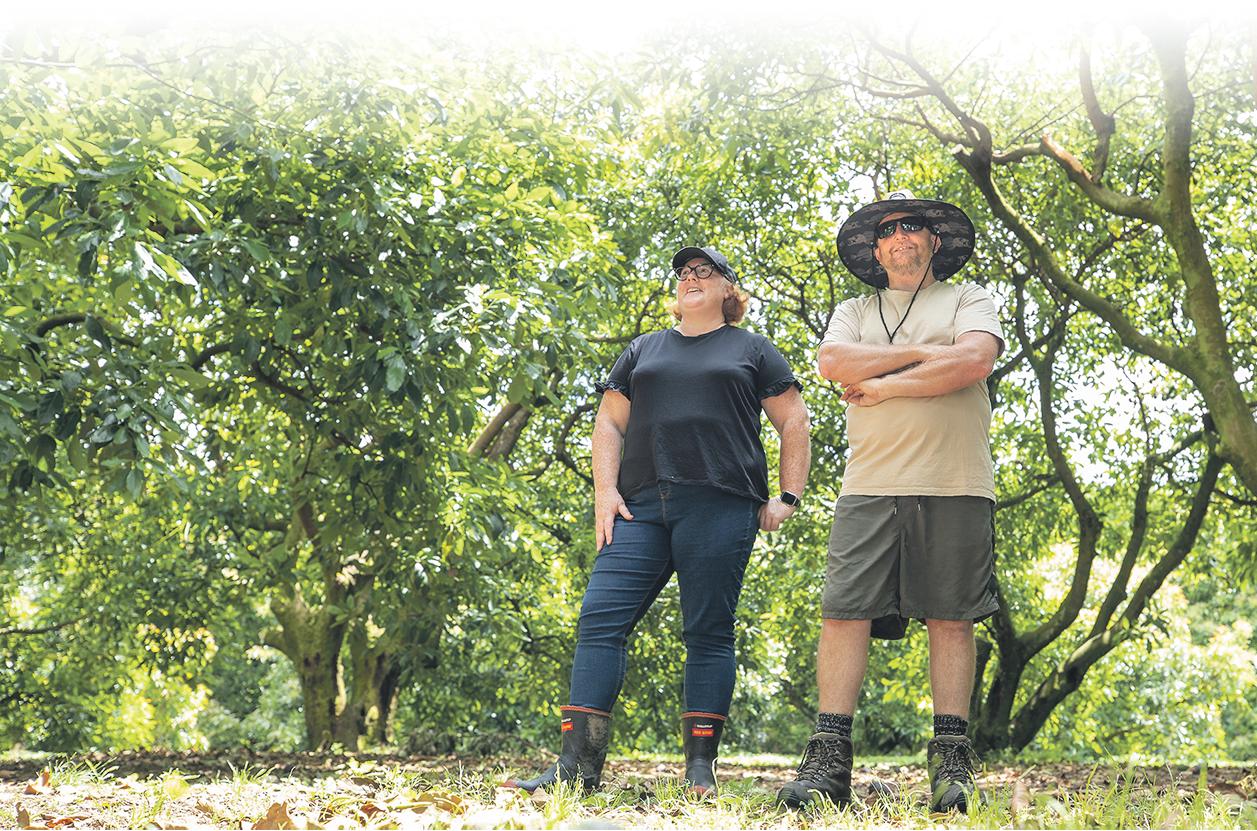
It’s been a steep learning curve for John and Alicia Ludemann, who’ve turned a neglected property into a thriving orchard.
As newbie orchardists, they’ve embraced challenges and learned from mistakes to achieve sustainable success.
It was March 2017 when they decided to move from Queensland, Australia, to Katikati. “I was looking for a dual income property with kiwifruit and avocados and enough land for stock so we could feed ourselves,” says John. “ is property at 10.11ha had both crops and some bare land so we could build the house and shed that we wanted.”
add seaweed with Stimplex into our sprays to help the trees recover and to encourage bene cial bugs. One reason I completed my AvoGreen certi cation was to become more accurate with spray application times. One ladybug can eat up to a hundred six-spotted mites in a day.” Biodiversity gives ladybugs and other insects something to forage. “For the rst few years we did put a lot of fertiliser on to build soil health,” says Alicia. “Now, we can fertilise and compost a handful of times through the year. We’re trying to be innovative, so we use a PFP lime that has humates. John can spread it
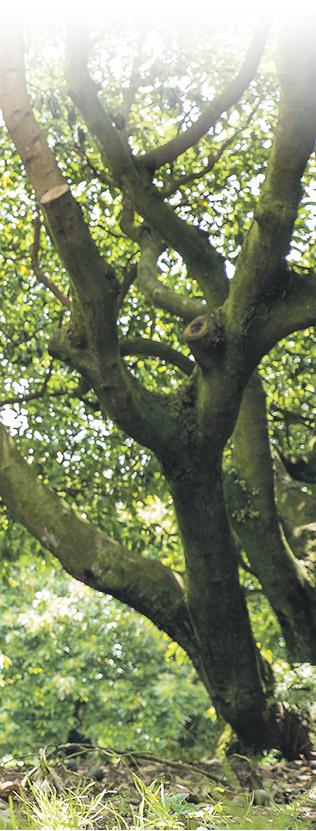
the soil better and is better for our pH.”
It took four years to improve the health of the avocados. From a yield of 30 bins in their rst year, John and Alicia now average 110 bins annually. “ e avocados were really sick,” says Alicia.
“In fact, when we bought the property we were told to rip them out, but we wanted to learn from them. “We’ve done well with the avocados. ey’re now very healthy trees.”


himself and it absorbs into
eir property is divided into about 2ha of Hayward green kiwifruit, 365 avocado trees on around 2.64 canopy hectares with space for cattle and sheep.
Regenerative farming aims to make farms stronger, starting with the soil. “We try to limit our footprints and compaction on the orchard,” says Alicia. “We don’t use heavy machinery other than for spraying or harvesting with pickers. We limit the times we mow, which cuts down on fuel and helps retain biodiversity. We incorporate compost in our fertiliser programme and that helps with mycelium – the main fungi avocados require to uptake all their nutrients. We do a structural prune every year, then John just prunes as needed. We
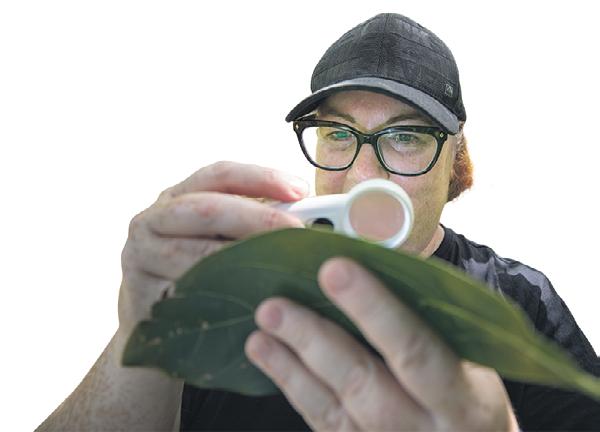
“At rst, only the kiwifruit was under management, but we always wanted to be hands-on, so we took over the avocados ourselves straight away,” says John. “We threw ourselves into learning and signed with Trevelyan’s. e technical support we’ve got from them has been so helpful. We wanted to be environmentally sustainable.”

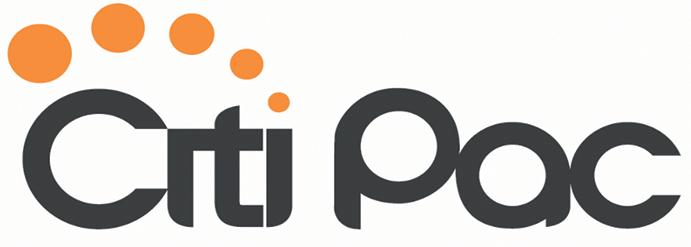



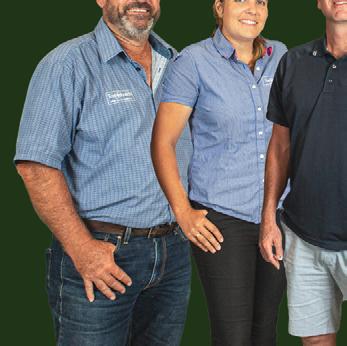




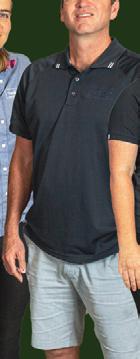

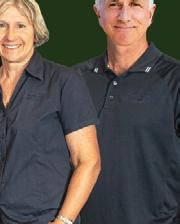





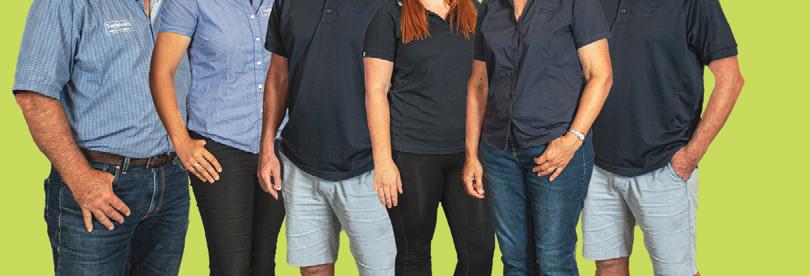
•
•Agricultural
•Agricultural
•
•
•
•


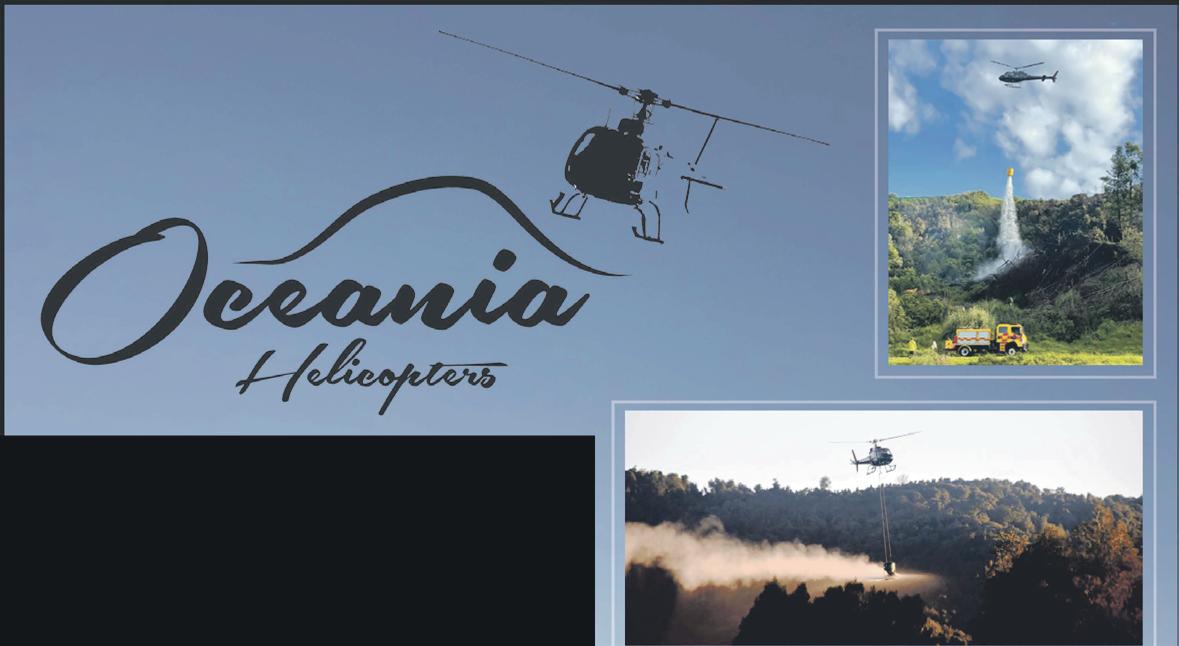





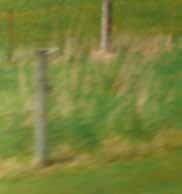

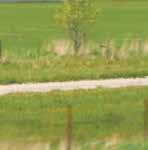
The next generation perennial ryegrass with superior persistence, improved summer growth and colour, and a great endophyte.


Maxsyn NEA4 Array NEA2

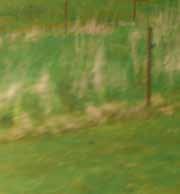

The benchmark in tetraploid perennial ryegrass, with superior year-round growth, persistence, easy grazing and excellent animal performance.


Our new superstar, bred for the good of your animals, and the environment. Delivering high intake, yield, nitrogen uptake and persistence, this is the diploid of the future.
Anyone can sow and grow an average pasture. But for new grass that will make your neighbours green with envy, you need to go just a little further. at’s the advice from local agronomist Gemma Hansen as farmers across the upper North Island prepare to establish millions of new grass, clover and herb seedlings.
Tender loving care at this early stage works wonders when it comes to lifetime pasture growth and longevity, says Gemma. You’ll be happier, and so will your animals.
“ ey’re also stealthy! Especially from the seat of a farm bike zooming past the paddock,” says Gemma. So always monitor newly-sown pastures for weeds very closely.
“ e sooner you spot any invaders, the faster you can get rid of them, allowing baby grass, clover and any herbs to ourish.”

4front NEA2 Forge NEA

Hybrid ryegrass is the phenomenal 3-5 year pasture bred to deliver performance your neighbours will envy, with environmental benefits too.







“Seed sown this autumn holds the power to fuel your business for years to come,” says Gemma, who works for Barenbrug.
“It’s packed with genetic potential, ready to deliver hundreds of tonnes of cost-e ective, renewable, home-grown feed, season after season.”
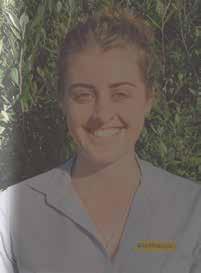
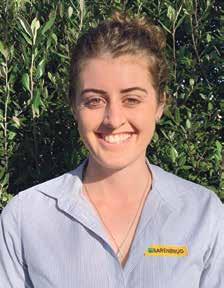









e only way it can do this is with your help. e good news? You don’t have to do much, and the payback is generous.
Right now, weeds are ready to take a big bite out of your new pasture’s future performance. ey’re fast, super-competitive and hungry for space, sunlight, nutrients and moisture.
Once they have their little roots rmly in the ground, grass seedlings in particular need to be grazed. Not too heavily – just enough to take the tips o . is tells the young plant to make more tillers, and you need lots of tillers for thick, healthy pastures, says Gemma.
A light nip at the right time saves clovers and herbs from being shaded to an early death, too. ey’re slower to establish than ryegrass.
Finally, Gemma says, remember new pasture isn’t always yet equipped to source enough nitrogen from the soil to help it re-grow after grazing. Ryegrass roots are too small, and clover hasn’t started xing nitrogen from the air.
“A light snack of nitrogen – say 30kg/ha, for example – if needed, will give new pasture enough energy to keep growing after grazing.” For more advice, visit: www.barenbrug.co.nz
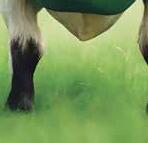



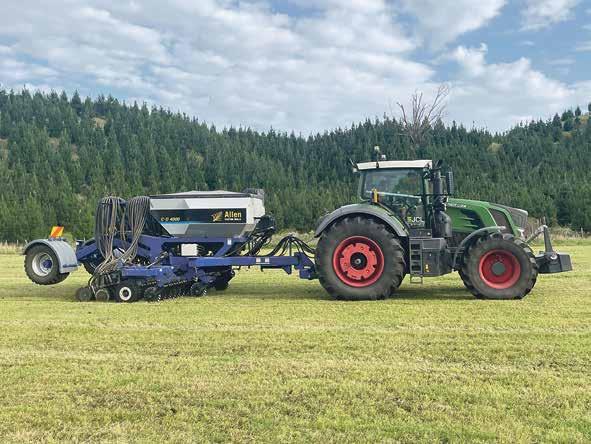
In agriculture, it’s not strange to nd farmers doing things exactly the same way their fathers did, or even a few generations earlier.
e reality is some traditional farming methods work just as well today as they did 100 years ago. And when it comes to old farming tools, they were built to last a farmer’s lifetime.
e Hooper Harrow is no exception. Founded in 1928 by Matt Hooper, Hooper Traditional Harrows has been breaking and levelling tough NZ pastures for 96 years and is still going strong!
With a true dedication to craftsmanship, original harrows were manufactured by hand as factory sta bent each steel harrow loop manually. e product quickly gained a reputation as a quality product that did the job and endured the test of time.
Hooper o ered a range of
With maximising pasture growth vital to increasing a dairy farm’s pro tability, you need to identify the lowest producing paddocks and understand their potential by comparing them with the best ones, according to DairyNZ. Renewing the poorest performing paddocks o ers the biggest chance for improvement – so measure performance using tools like grazing and yield records or the Pasture Condition Score Tool.
Factors such as soil fertility, drainage issues, and overgrazing can a ect performance. For poor-performing pastures, it’s crucial to address the root cause, whether that’s soil health, drainage, or overgrazing. Tools and strategies are available to assist you in making informed decisions.
Analysis of your pasture growth data will help you plan the most pro table renewal programme.
While you may instinctively know your best and worst paddocks, without measuring or assessing pasture growth paddocks cannot be accurately ranked to identify worst performance. Here’s
Today, the Traditional Hooper Harrow is still breaking ground with generational loyalty from farmers throughout New Zealand. e range has grown to include ATV budget harrows, economy spiked harrows, covering harrows for seedbed preparation, heavy-duty round ring harrows, and the popular Douglas harrow range, named after Matt Hooper’s son Douglas.
Now manufactured in Palmerston North by Redback Global, Hooper Harrows are sold directly to farmers via the NZ farm machinery dealer network.
As Hooper Harrows plan its 100-year celebrations in a few years, they invite you to contact them or your local dealer to chat about your pastures and the best product for your application.

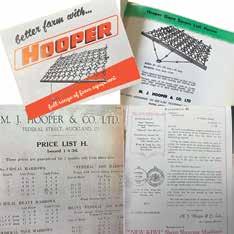






on Federal St, Auckland.
e famous yellow paint was custom-designed for the product and named ‘Federal Yellow’ as a nod to the factory location and company history.

products including ‘Ideal’ harrows and ‘Federal’ disc harrows – all manufactured in the MJ Hooper factory
Historic price lists show the Hooper Harrow won rst prizes and medals at the Royal Show in 1934, and the original ‘Ideal Harrow’ 4’6” Model sold for six pounds.
some key paddock selection steps.
First, identify the poorest producing paddocks. Second, compare those to the best performing paddocks to assess potential. irdly, identify why these paddocks are the lowest producing. e best paddock/s to renew are the poorest producers as these have the potential for greatest improvement. For more information, see https:// www.dairynz.co.nz/feed/ soil/paddock-selection/ (Source: www.dairynz.co.nz)


